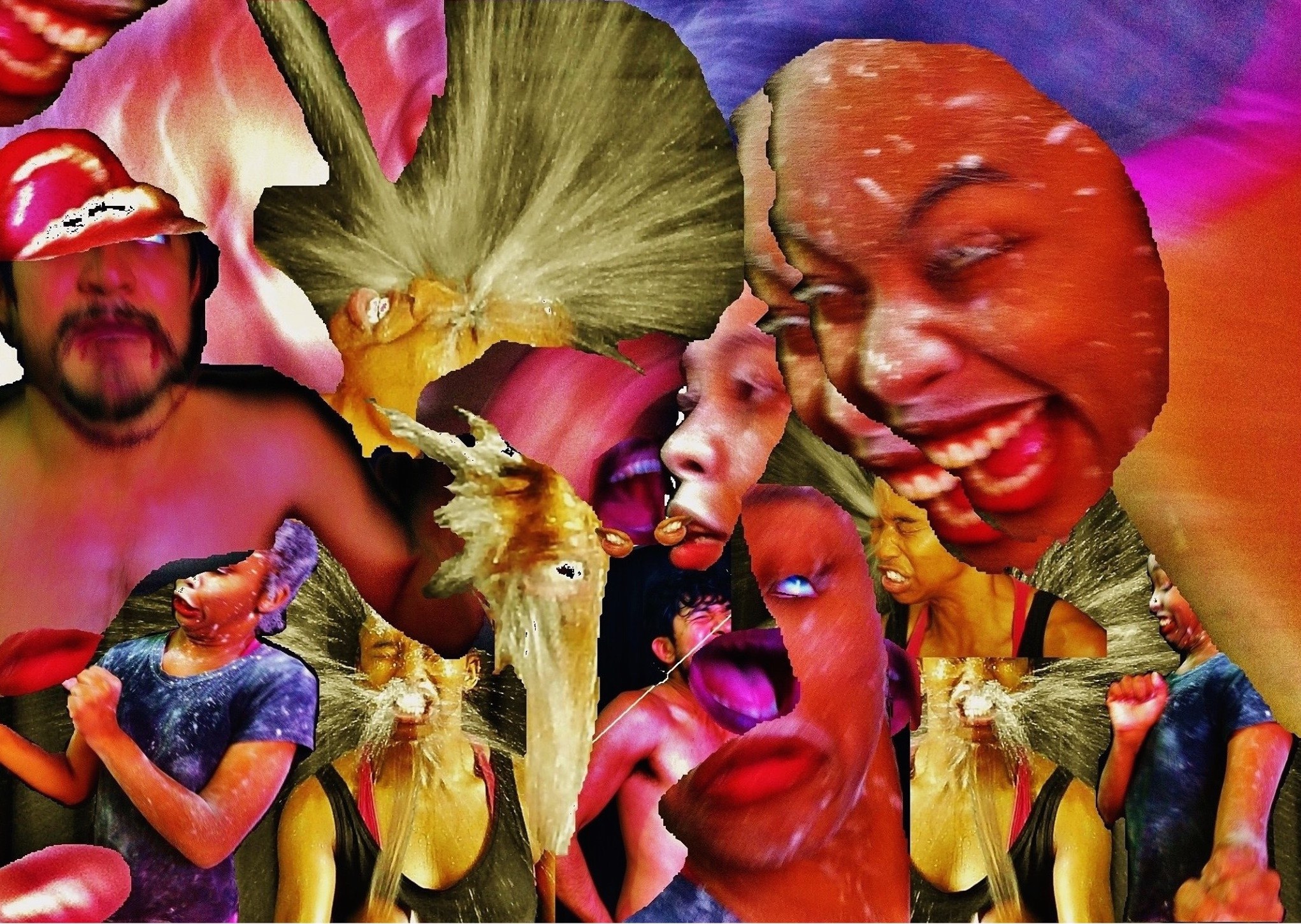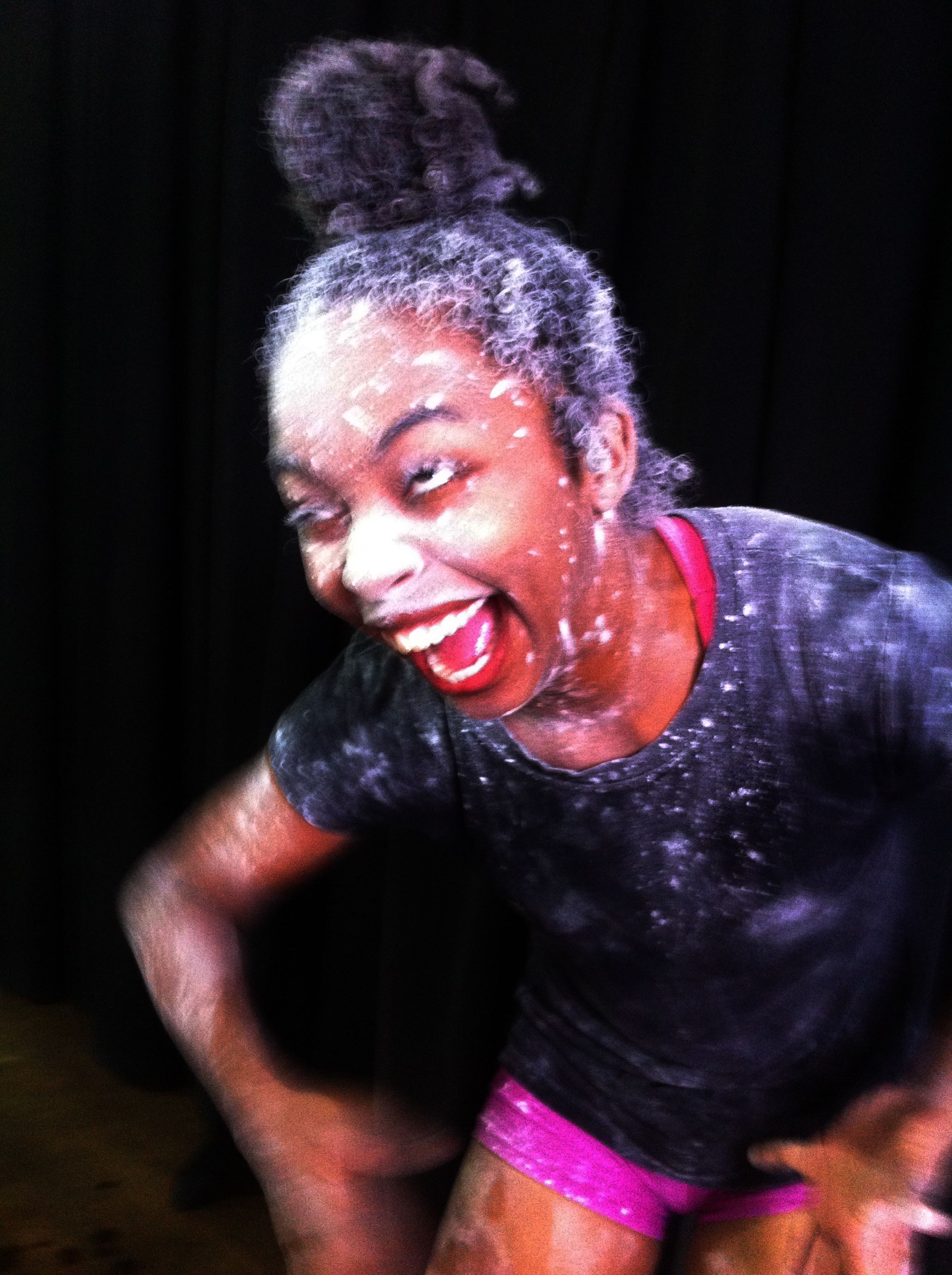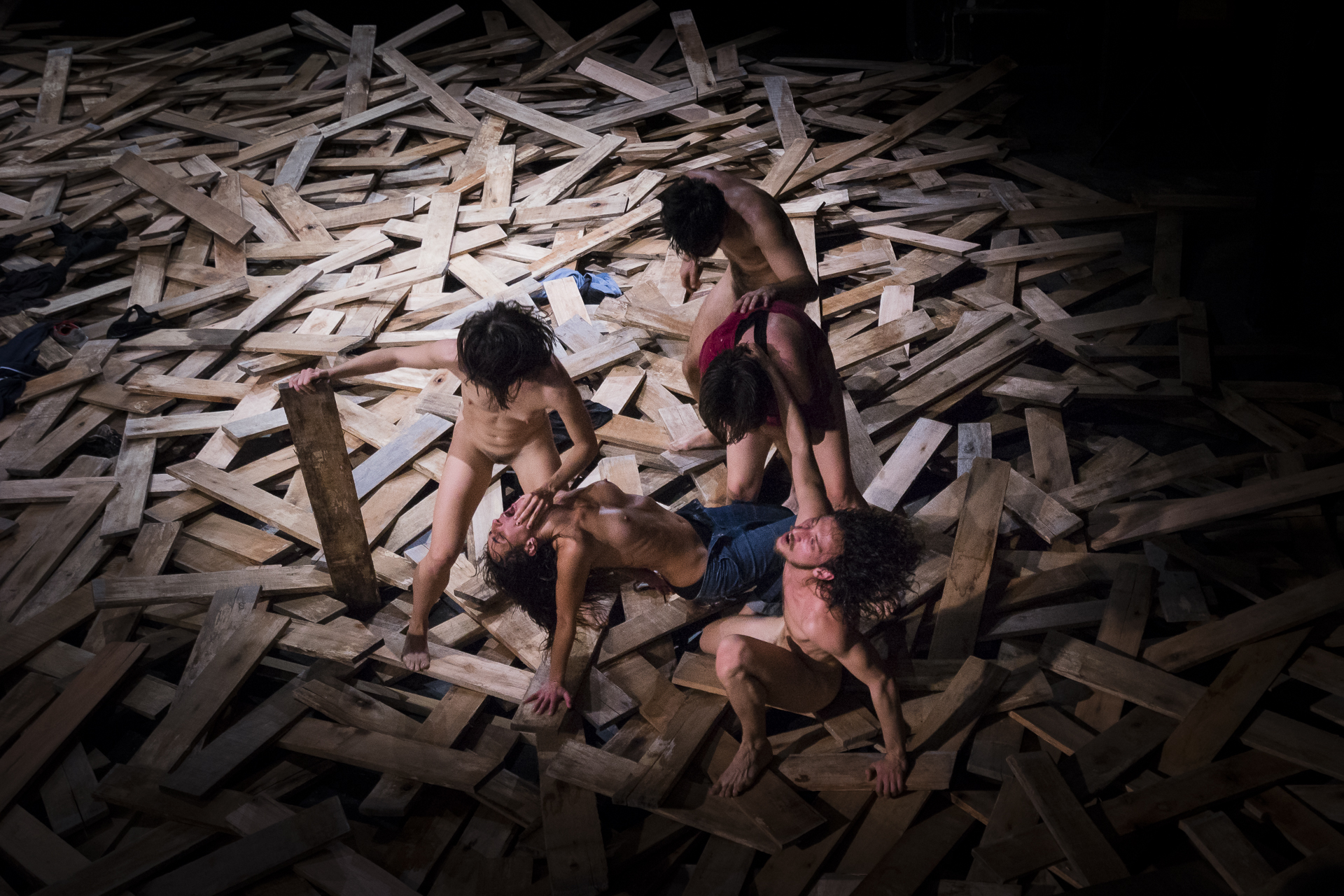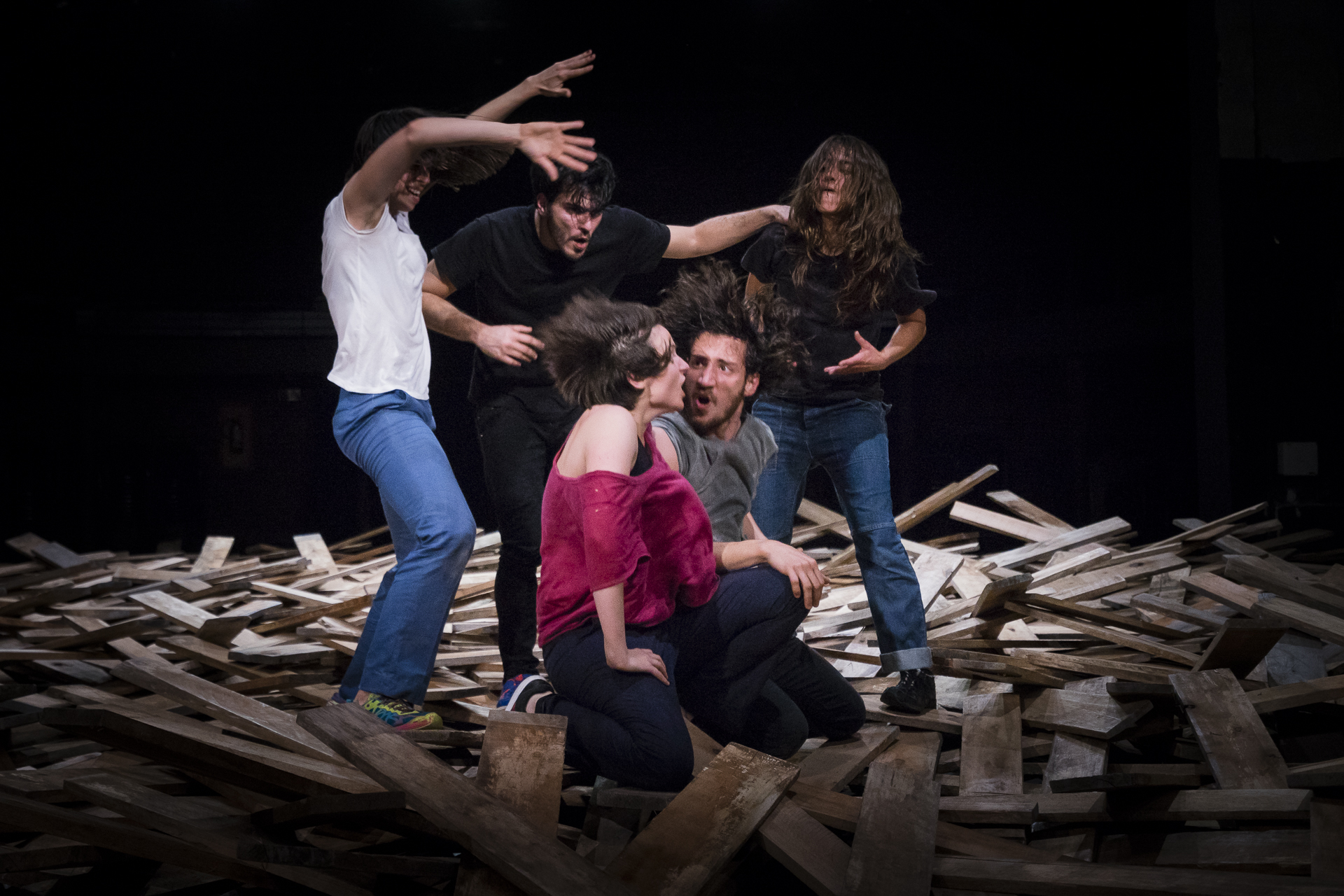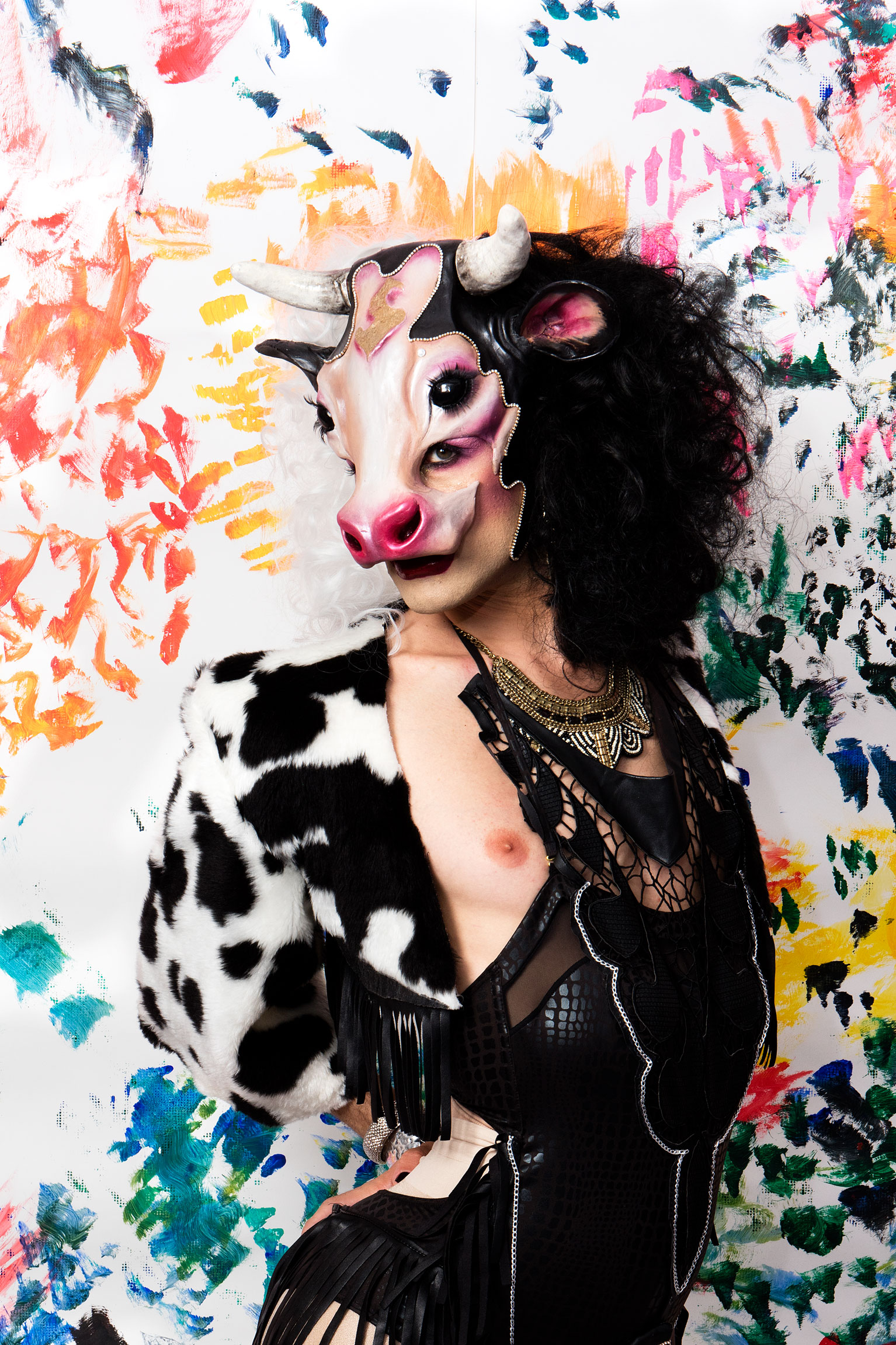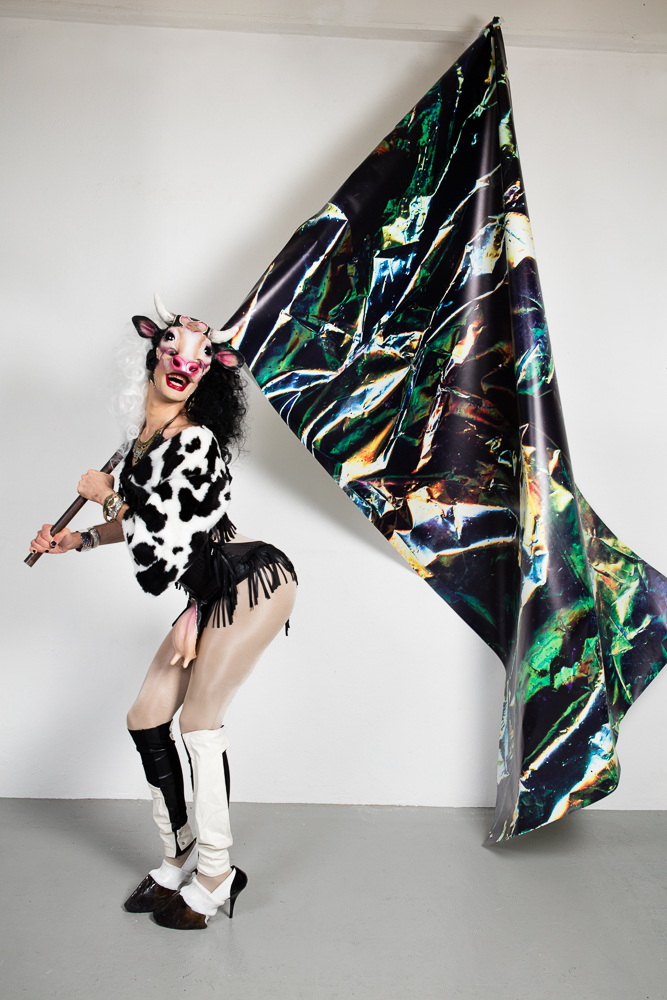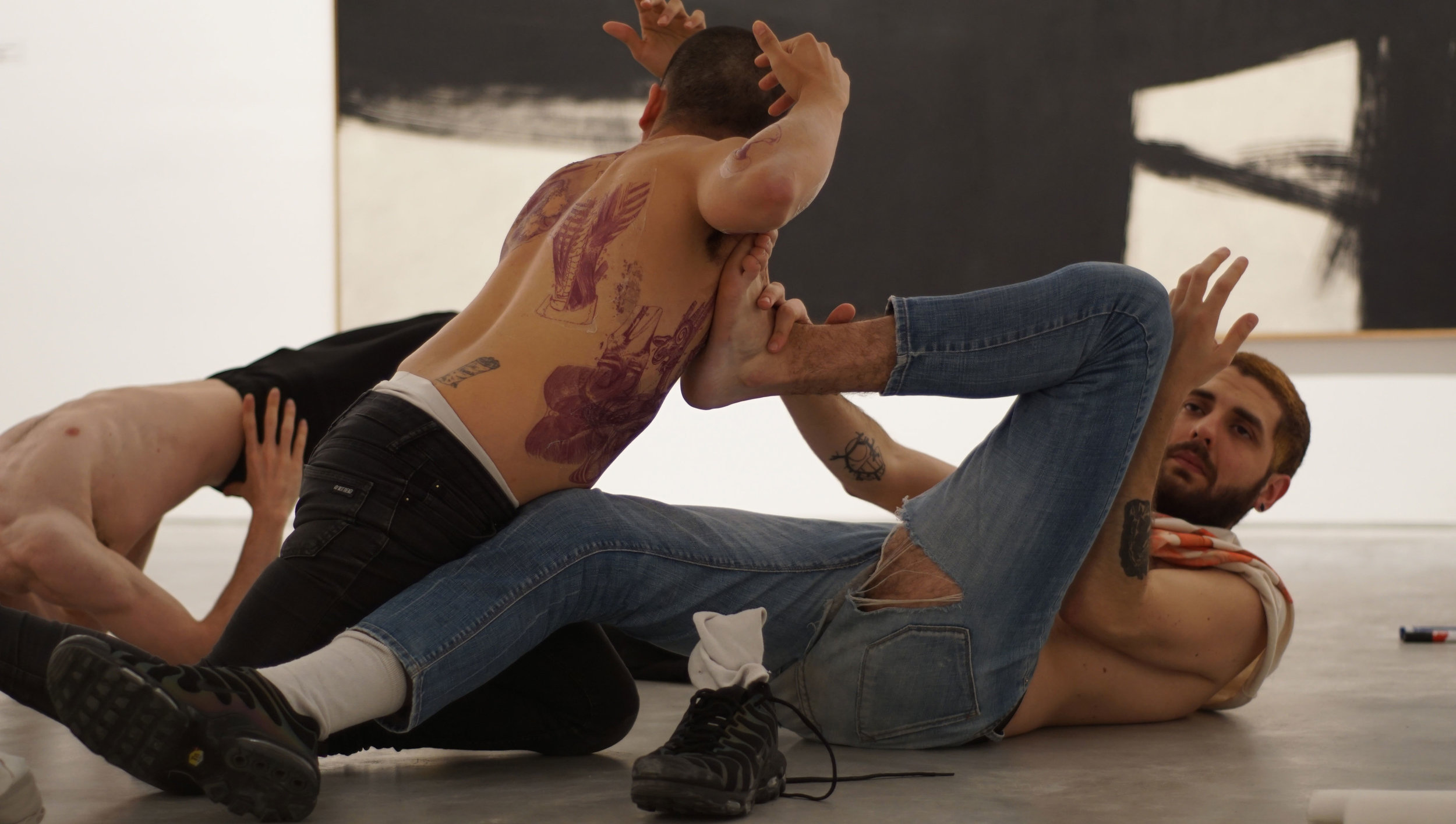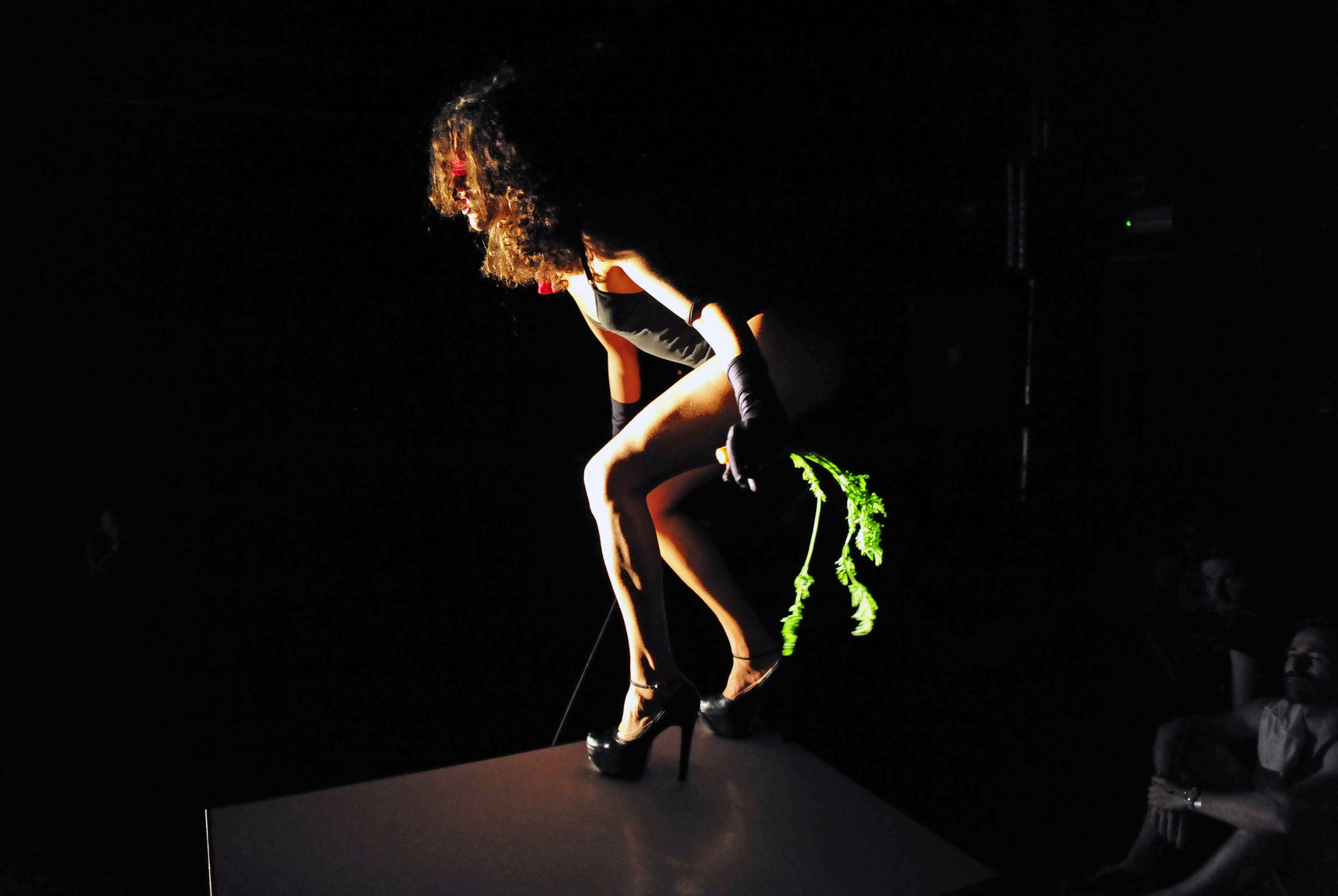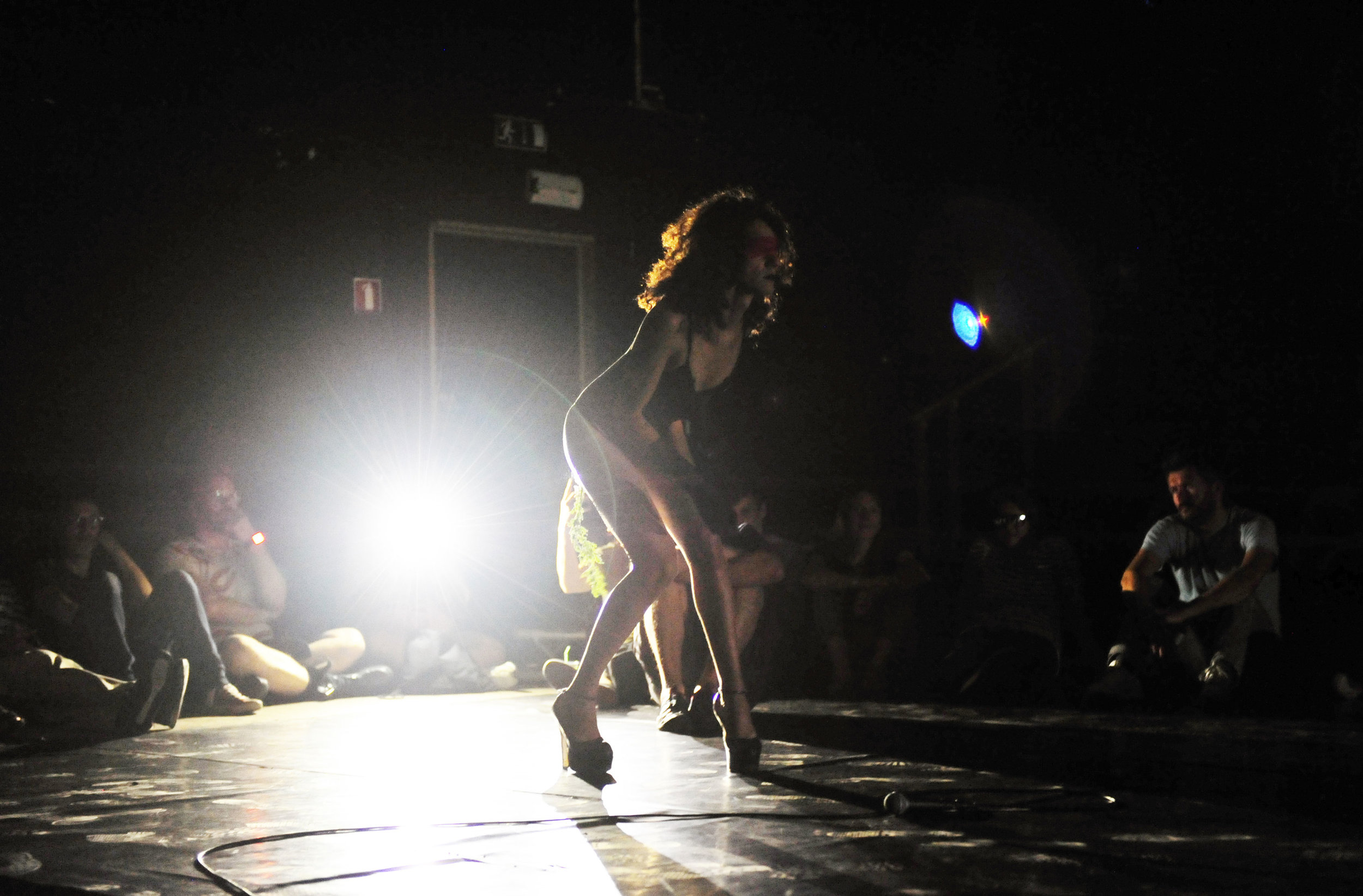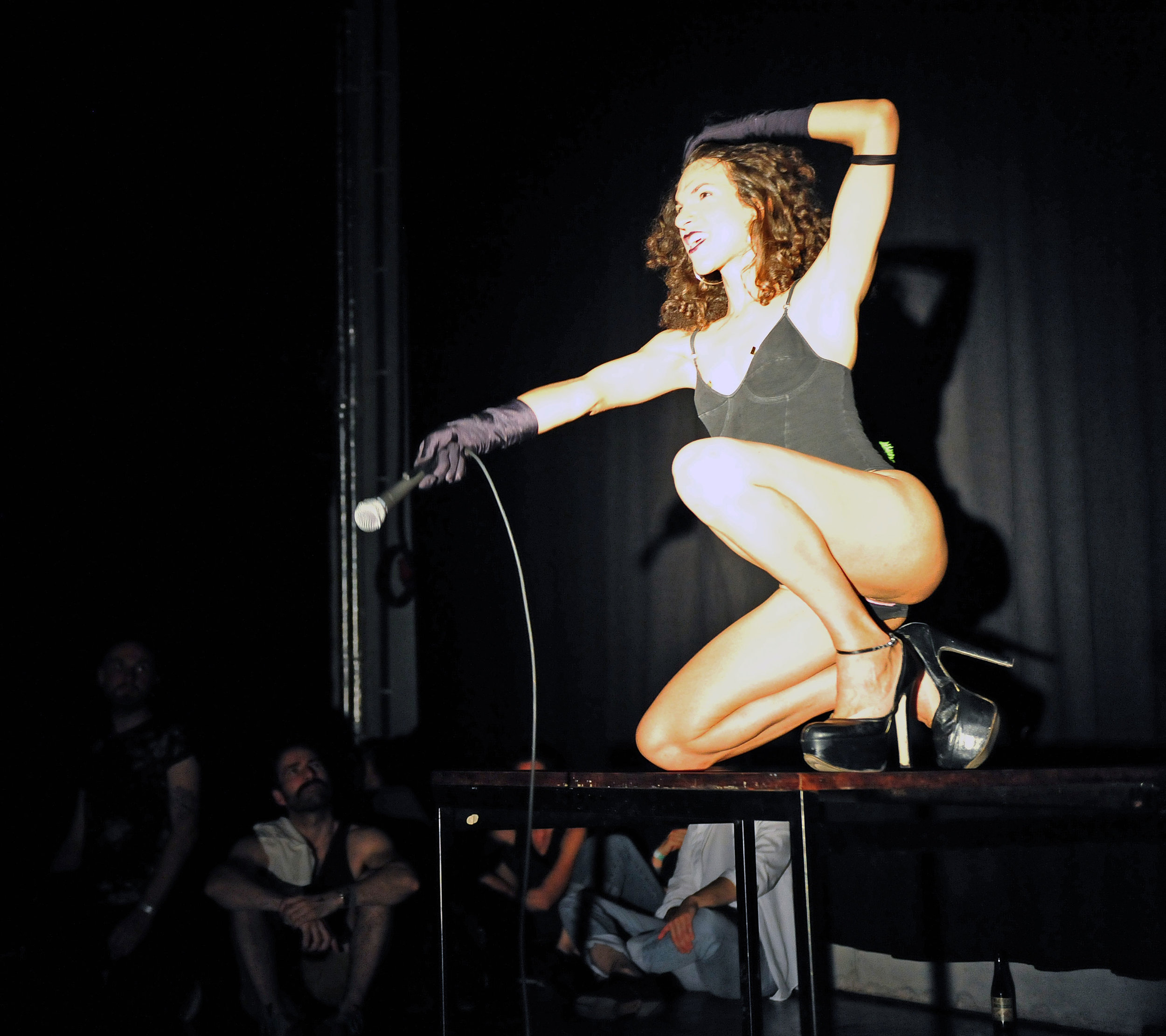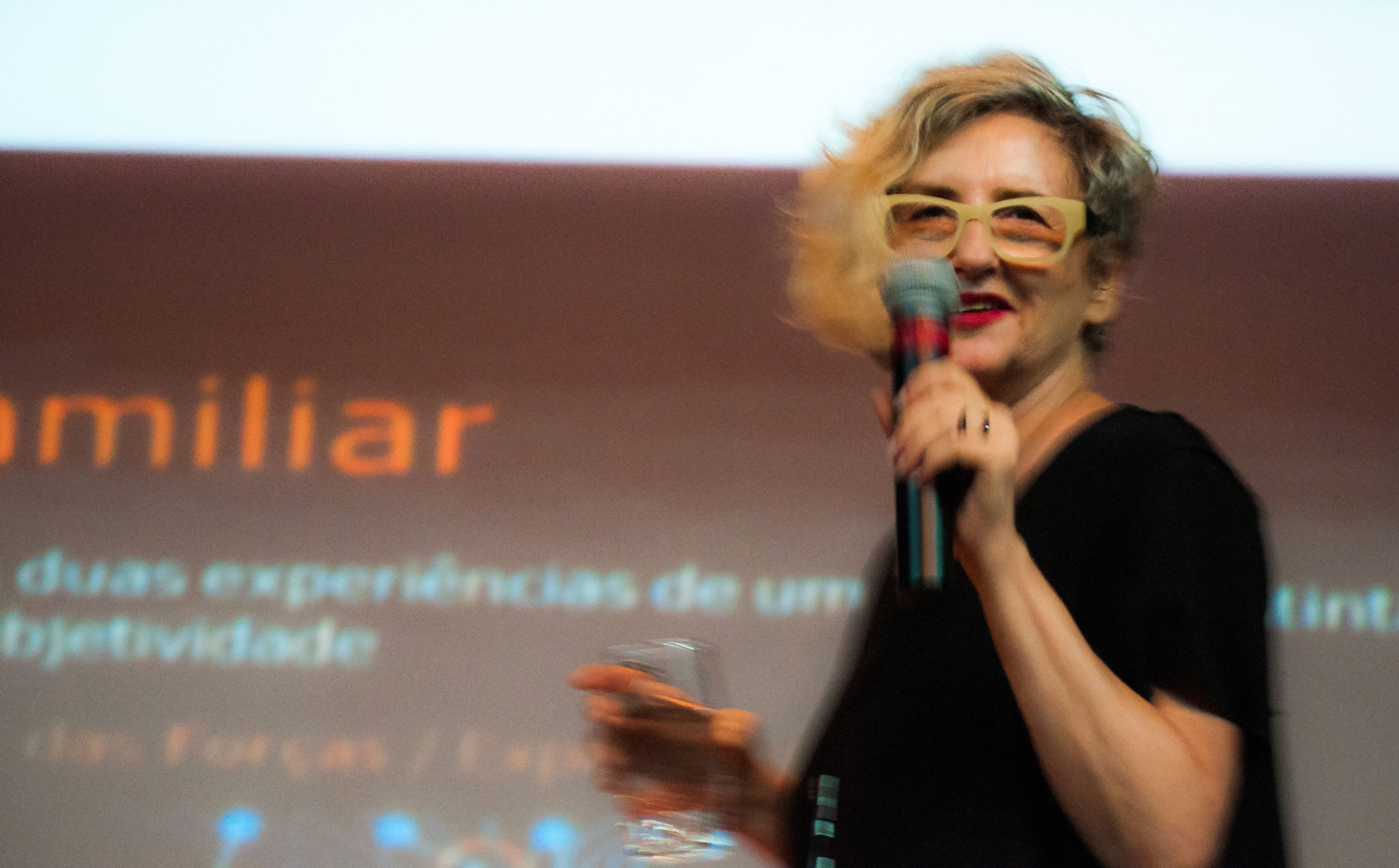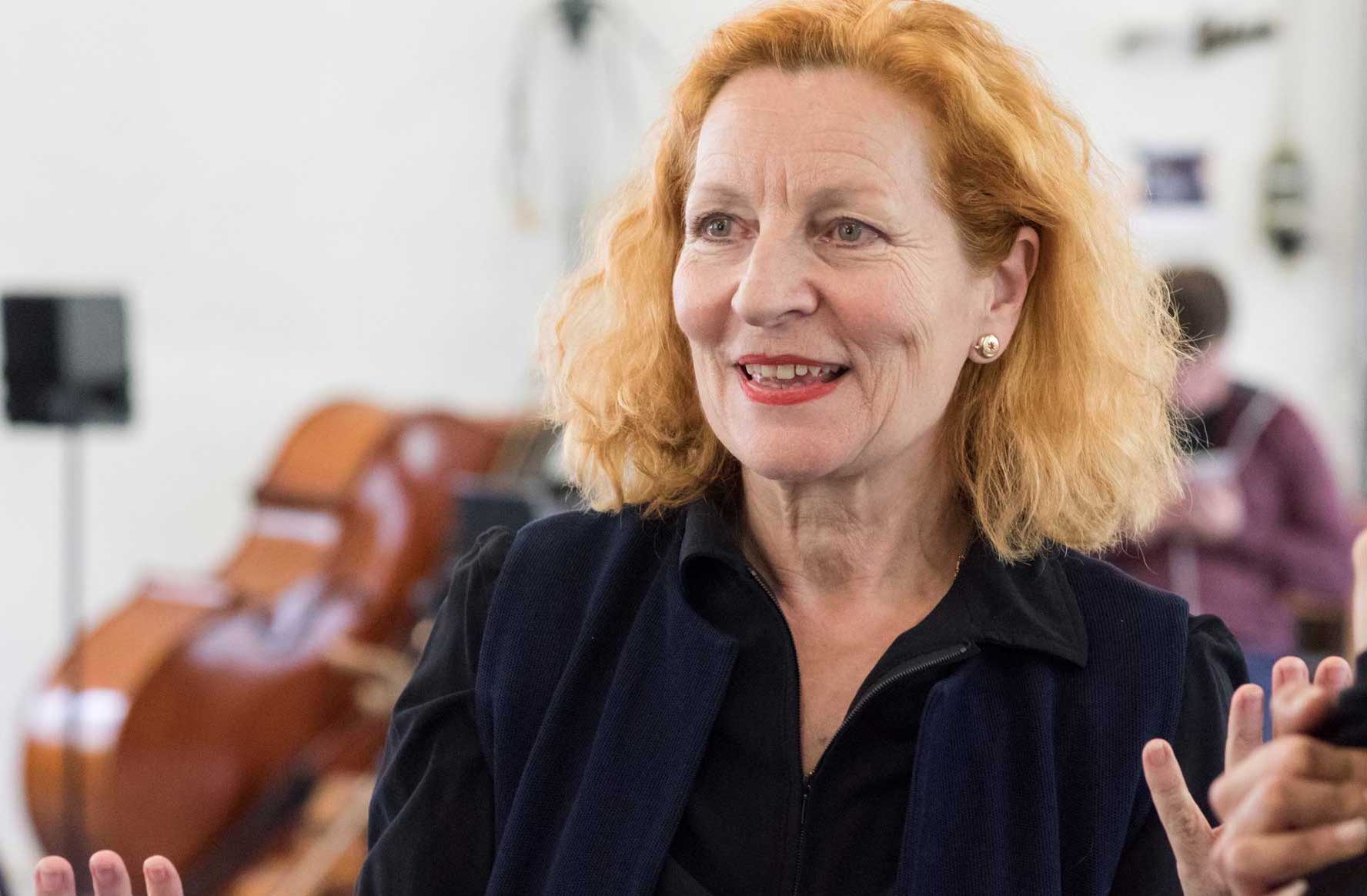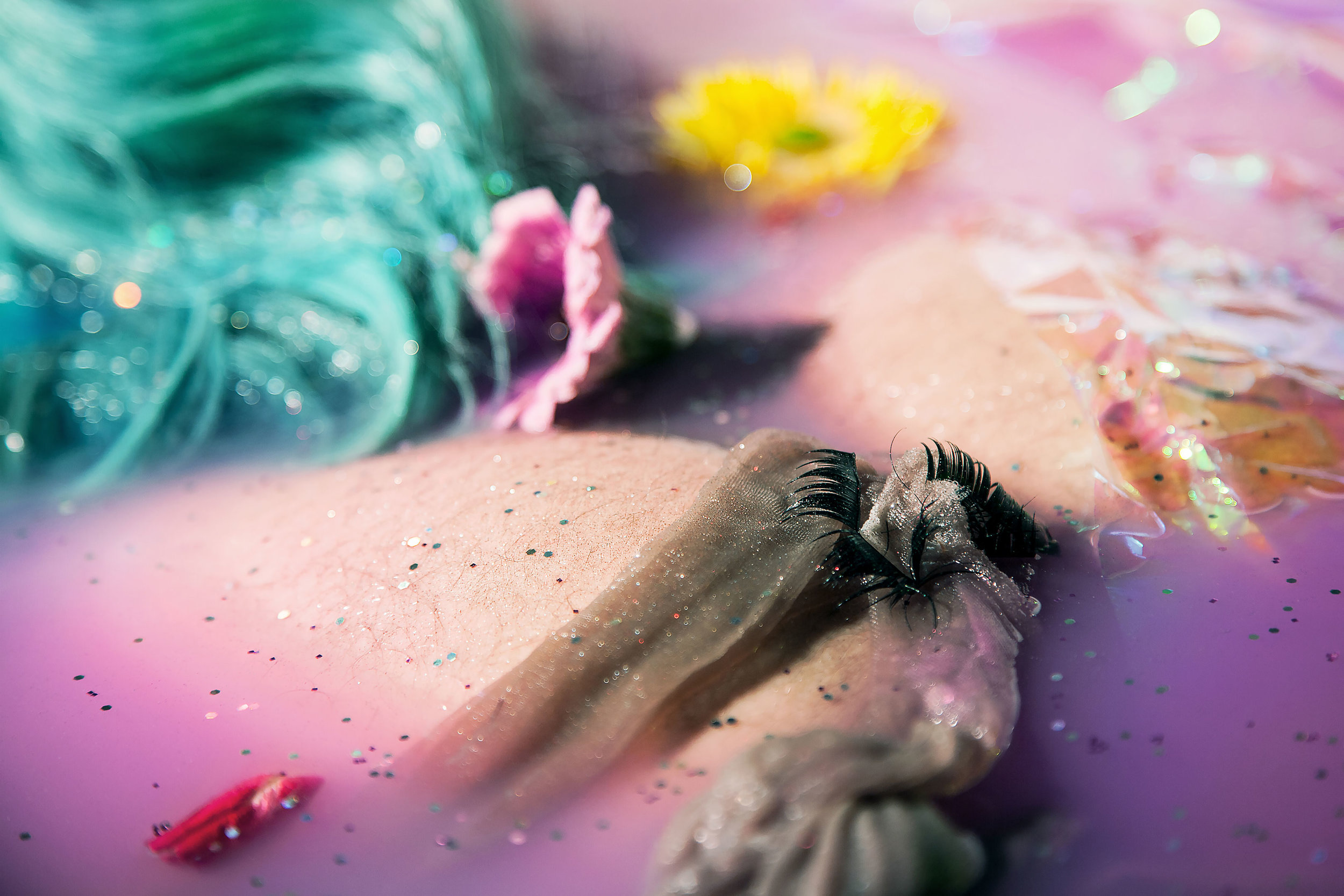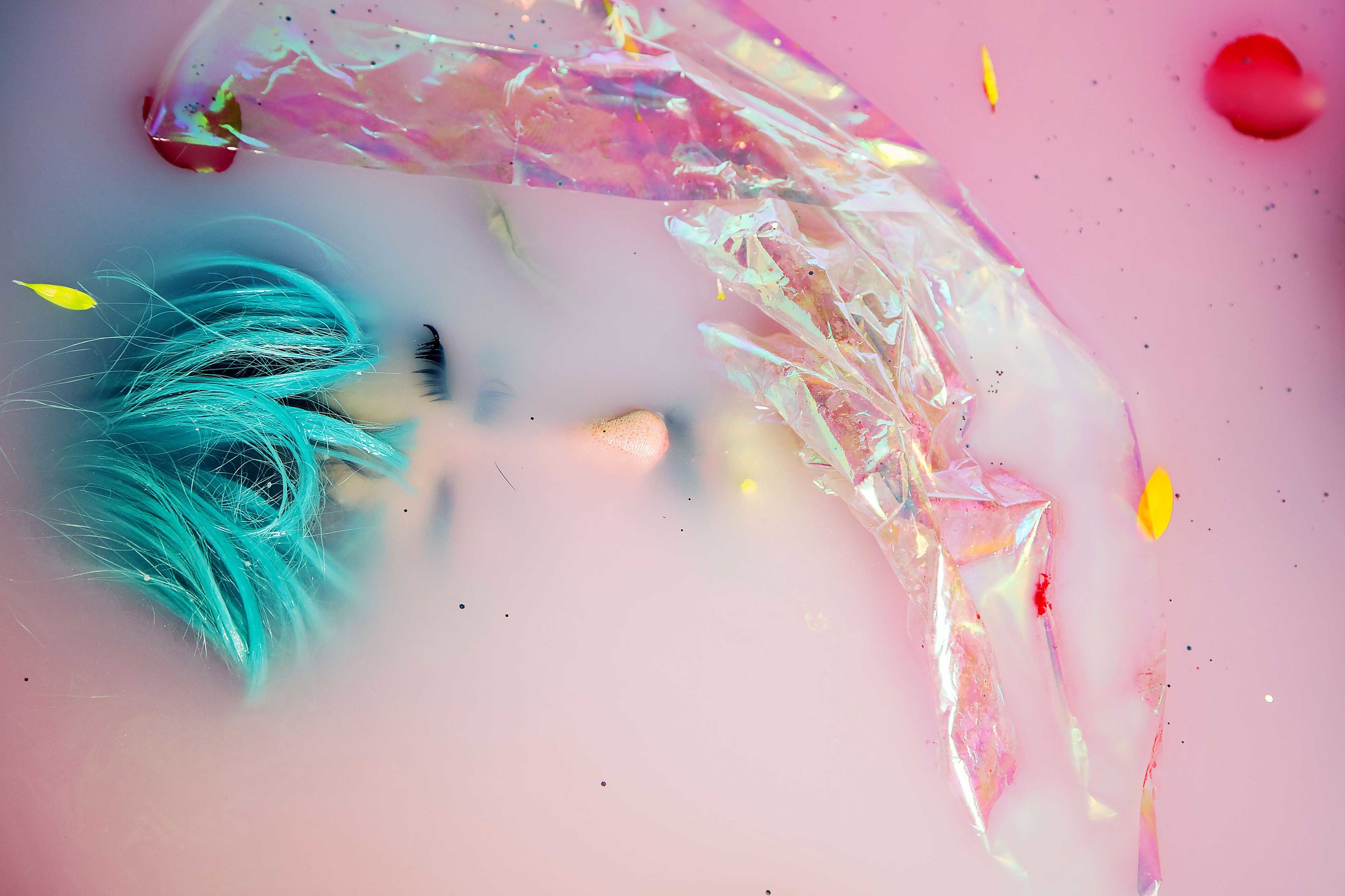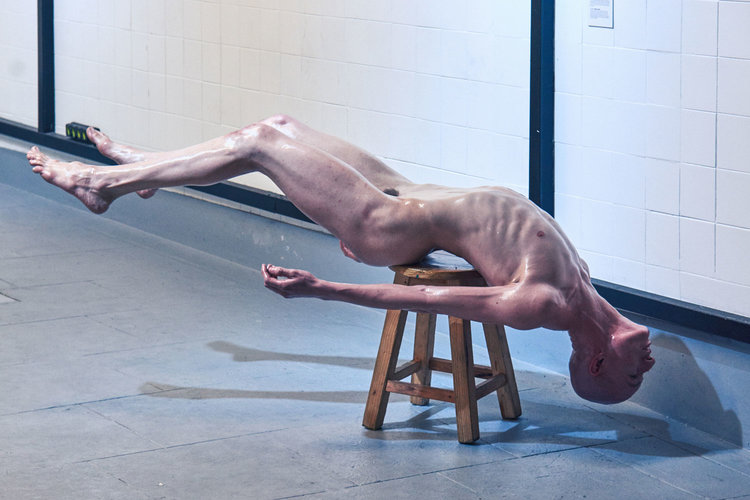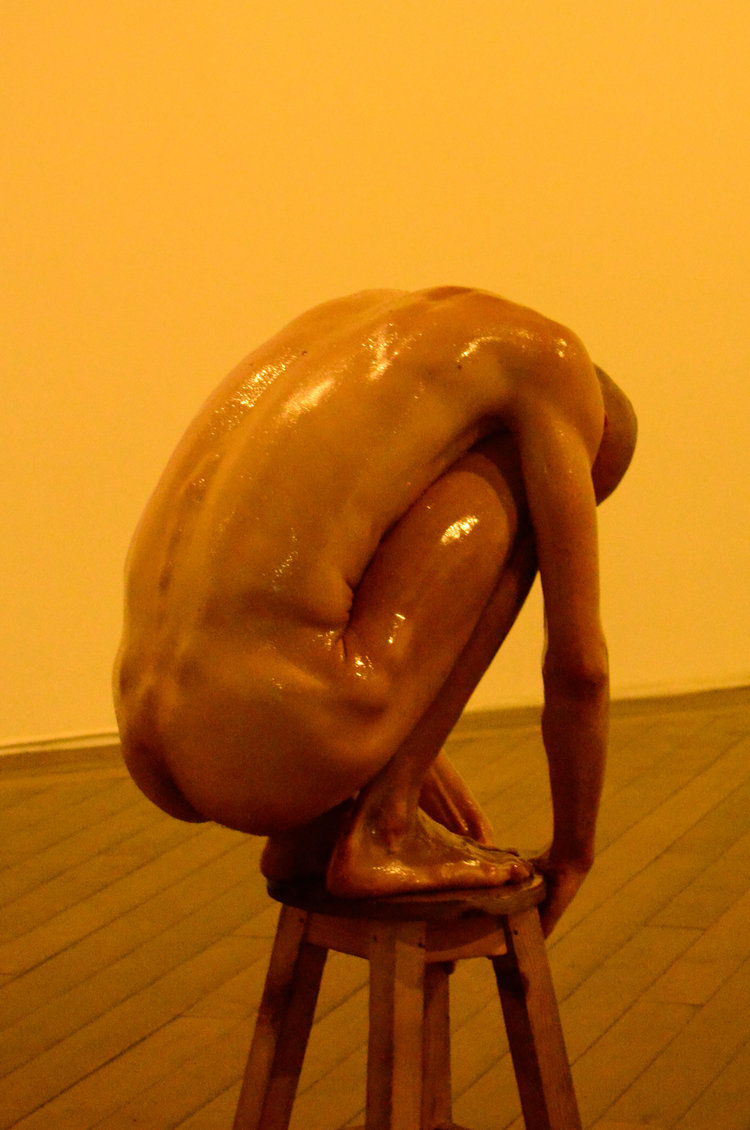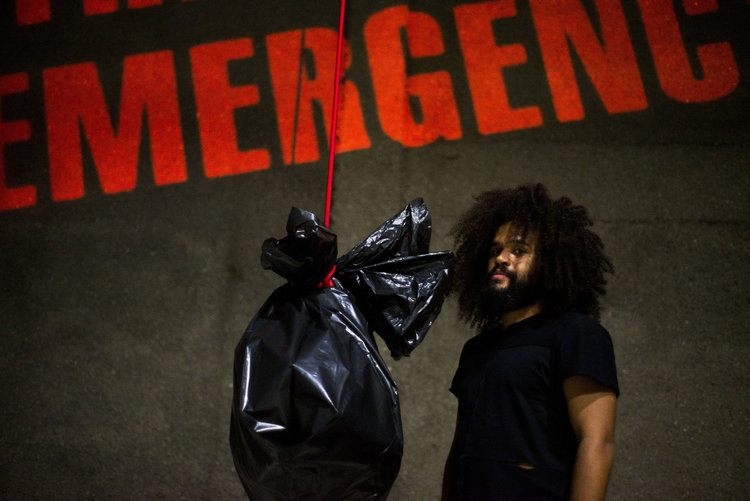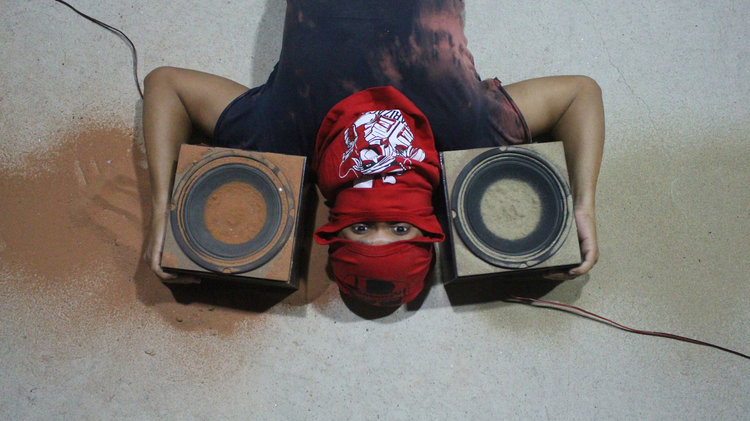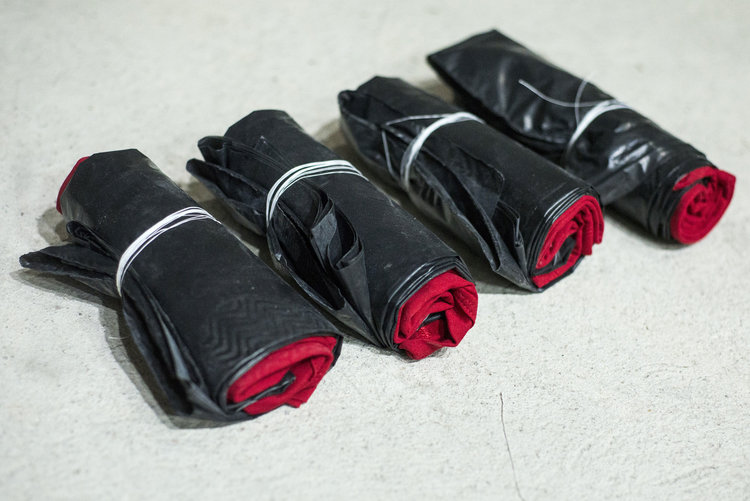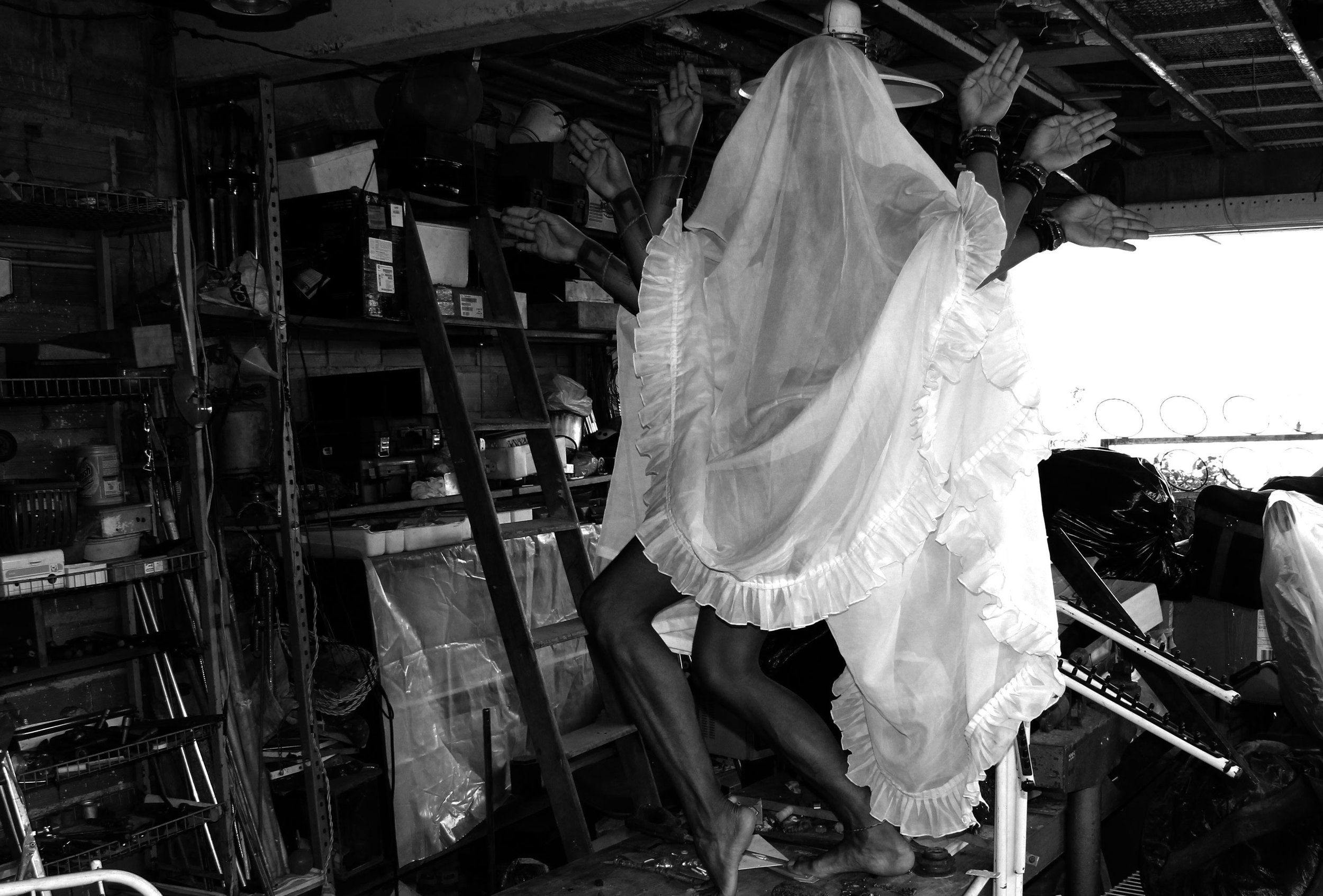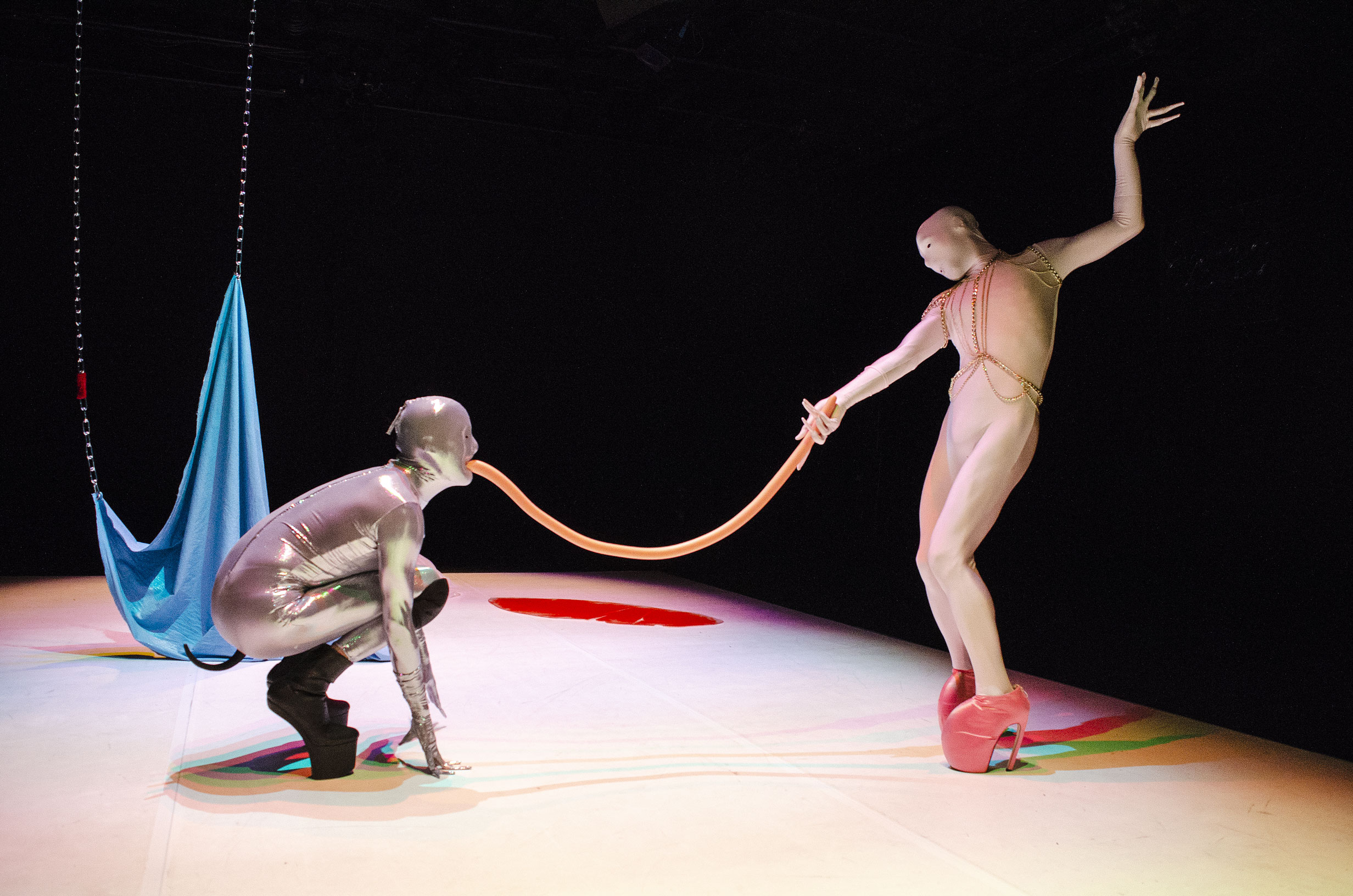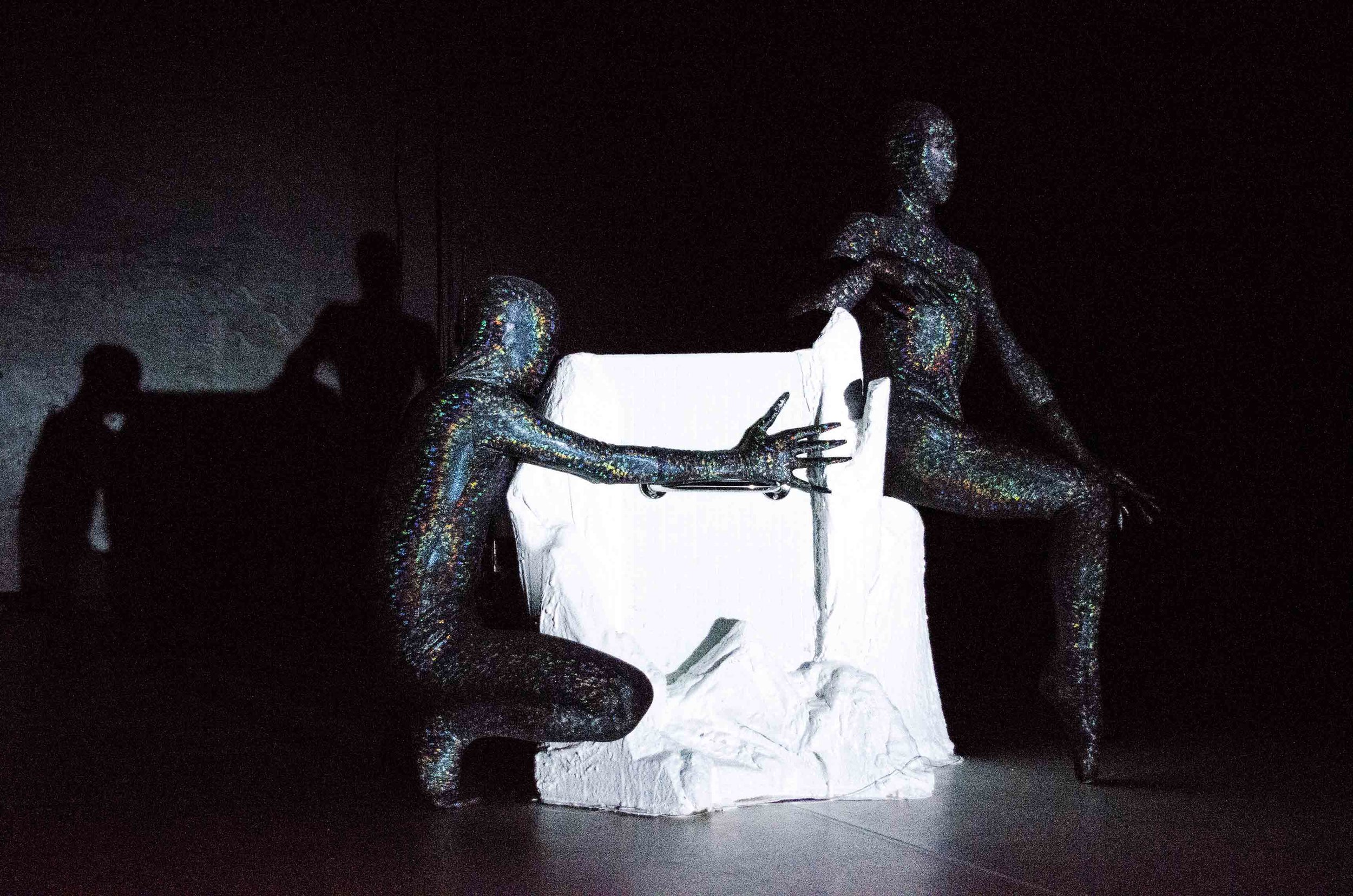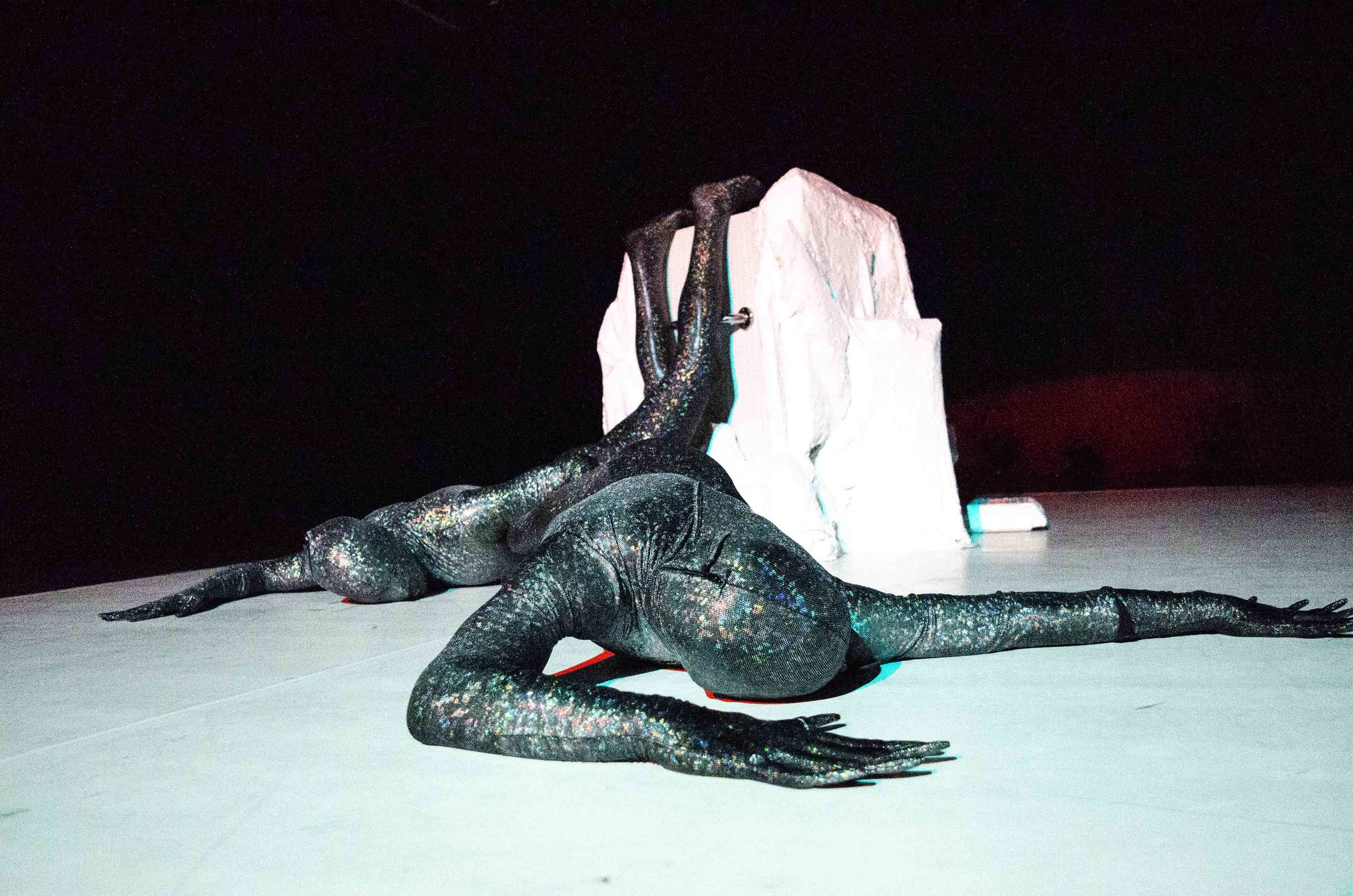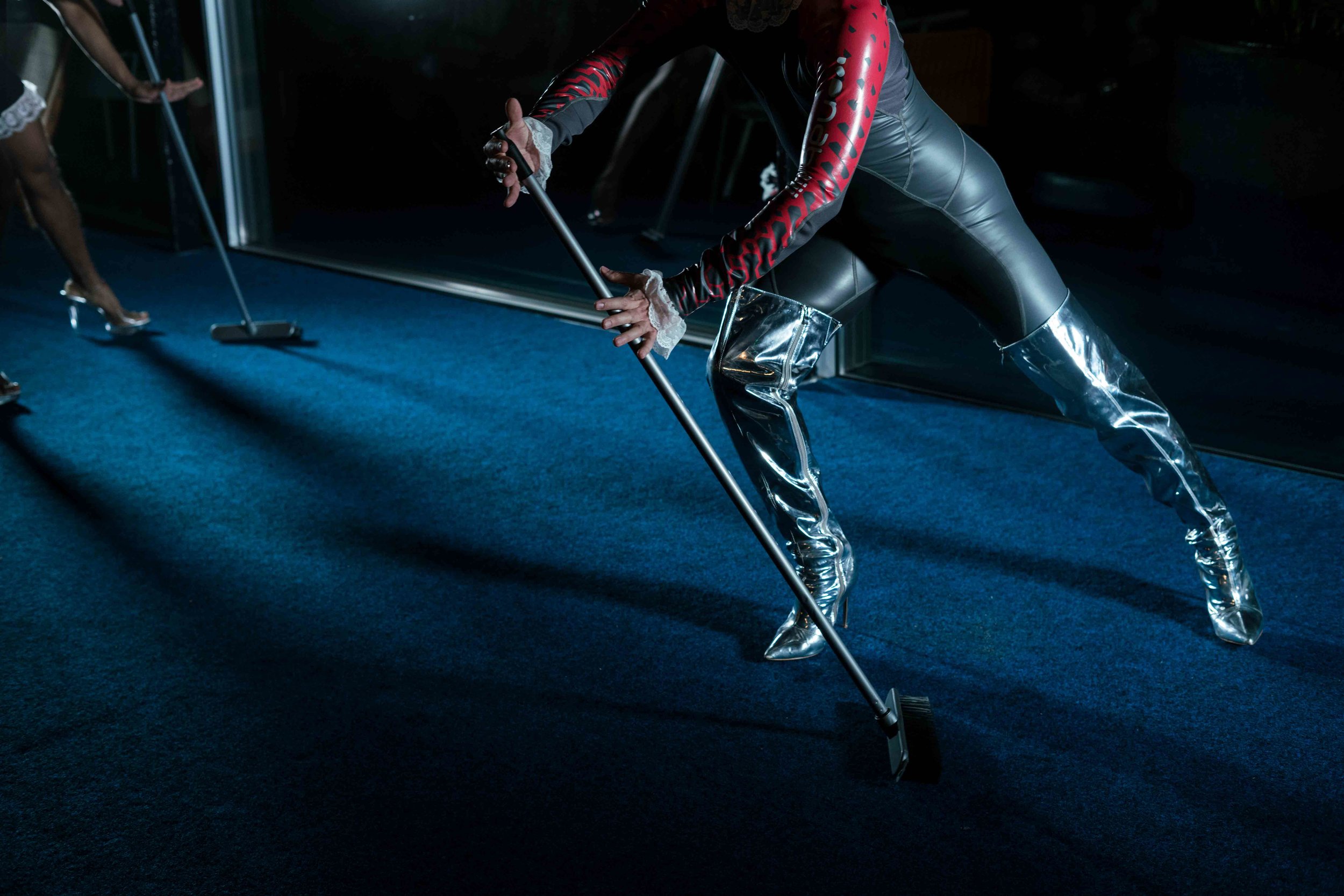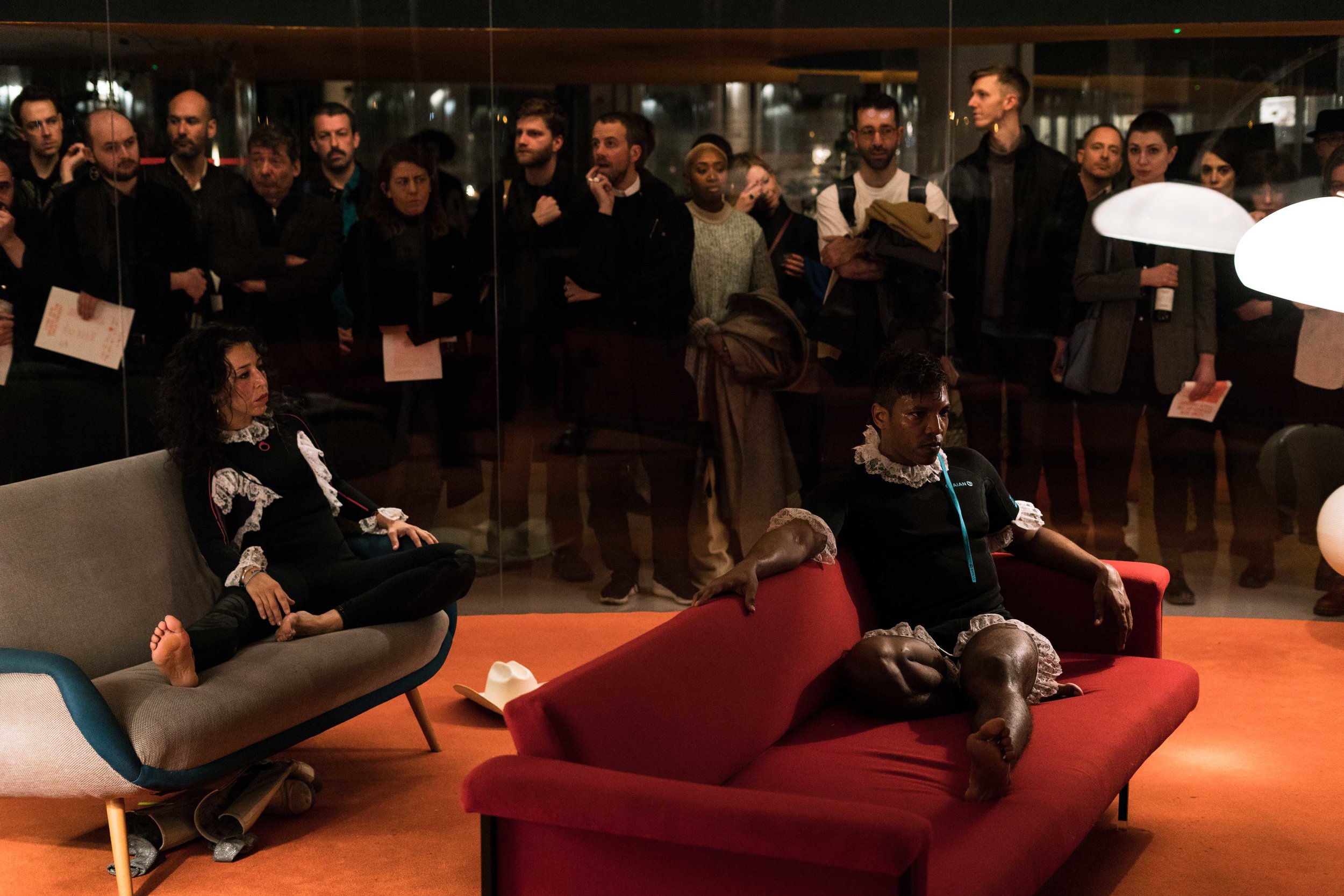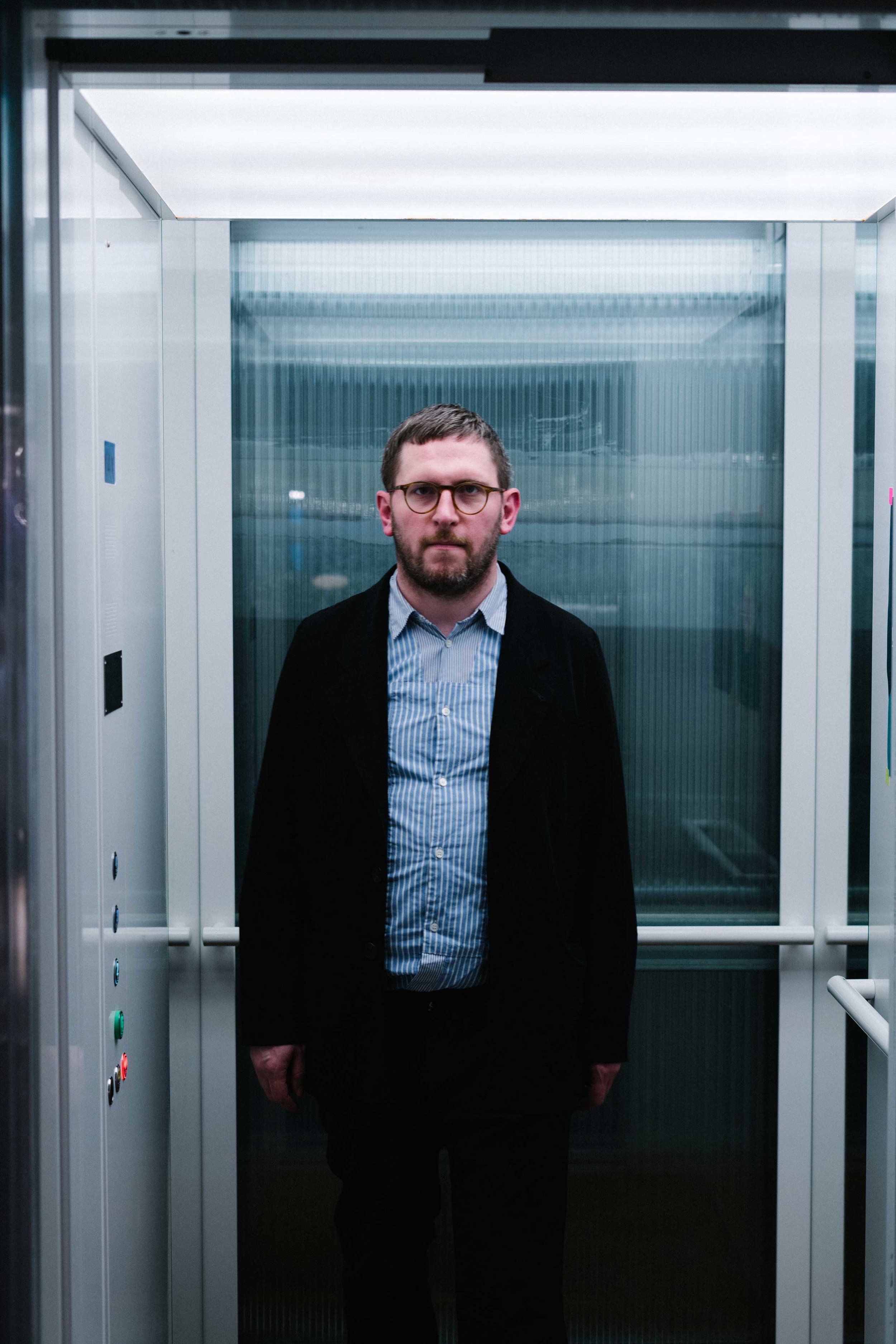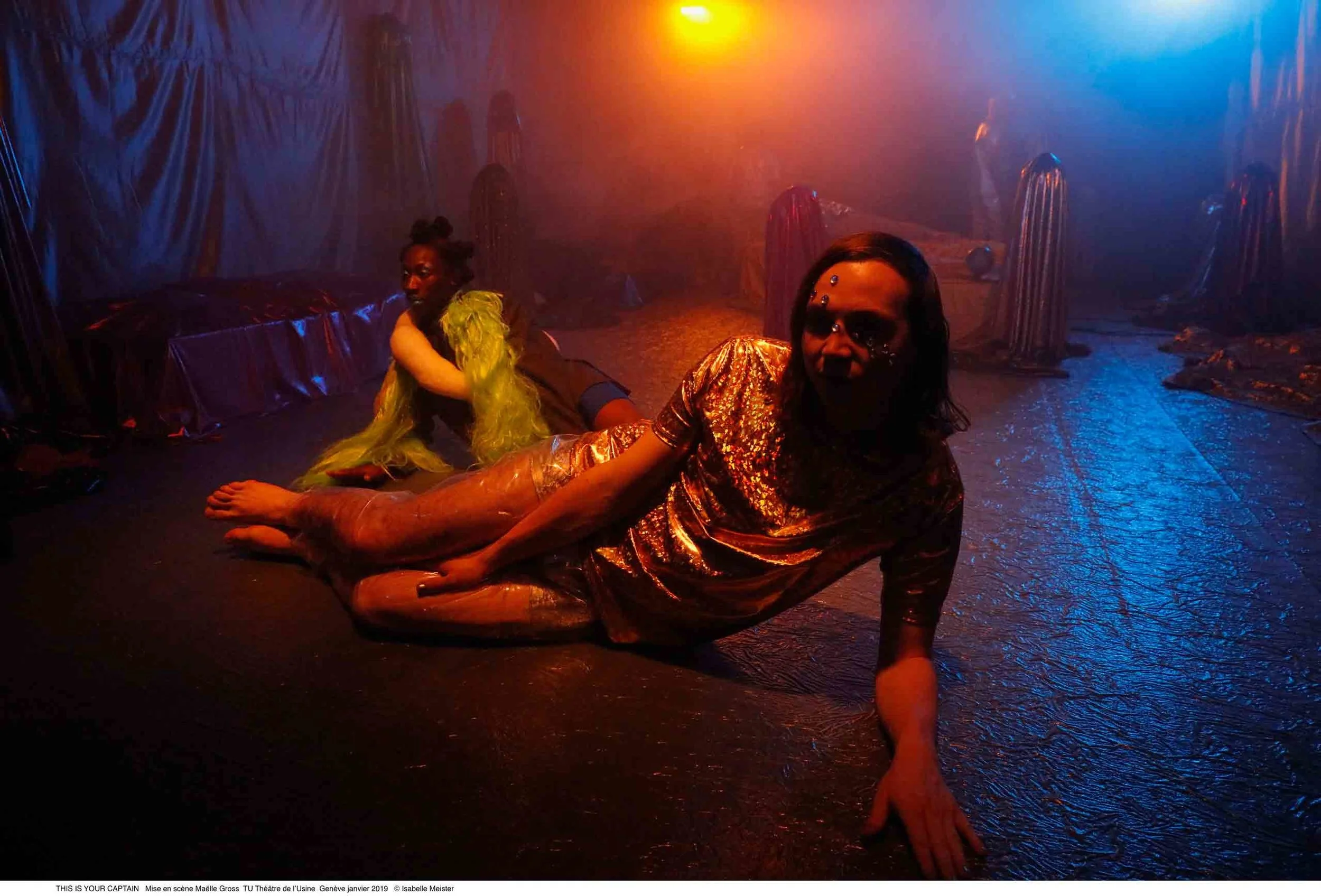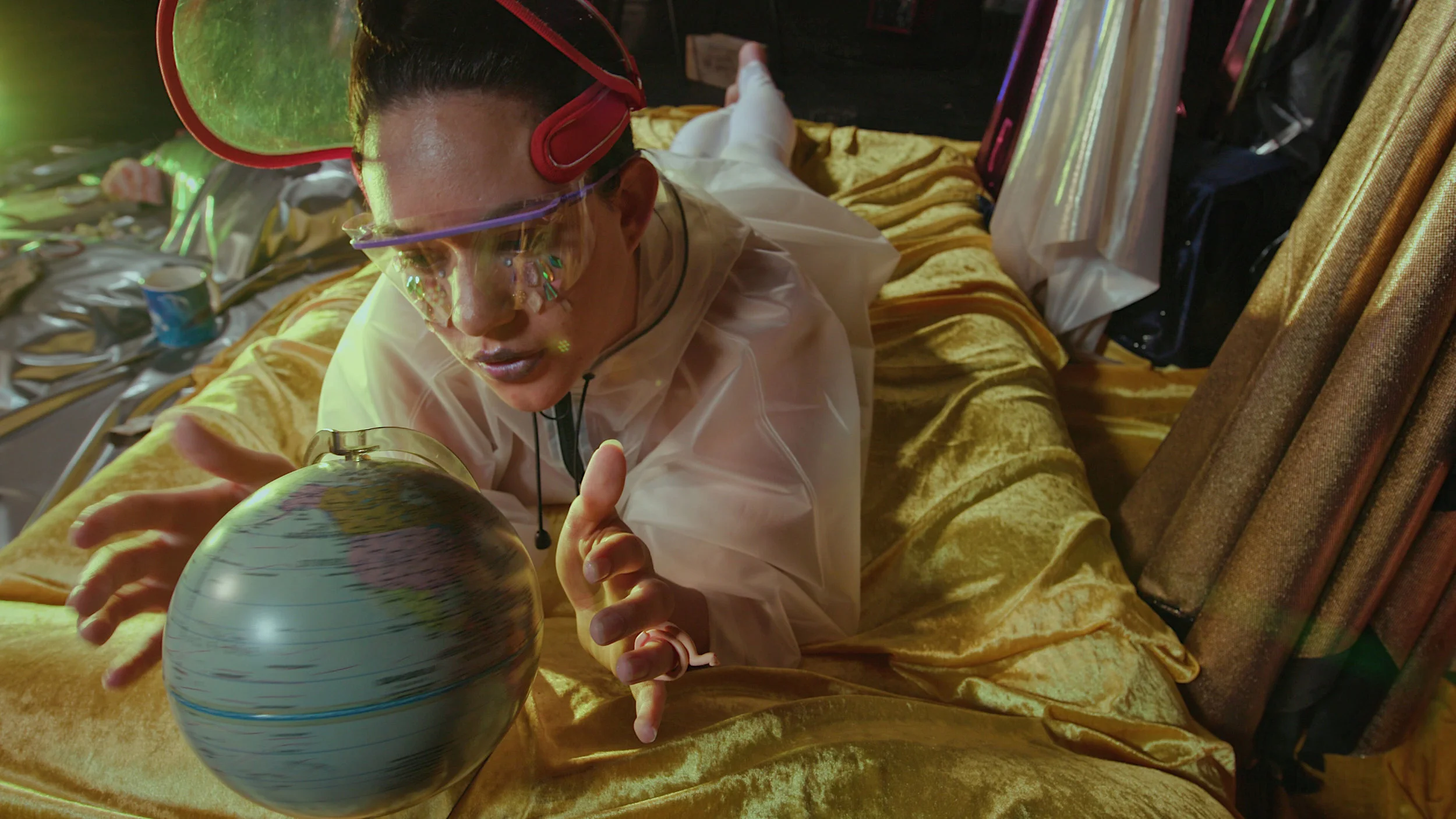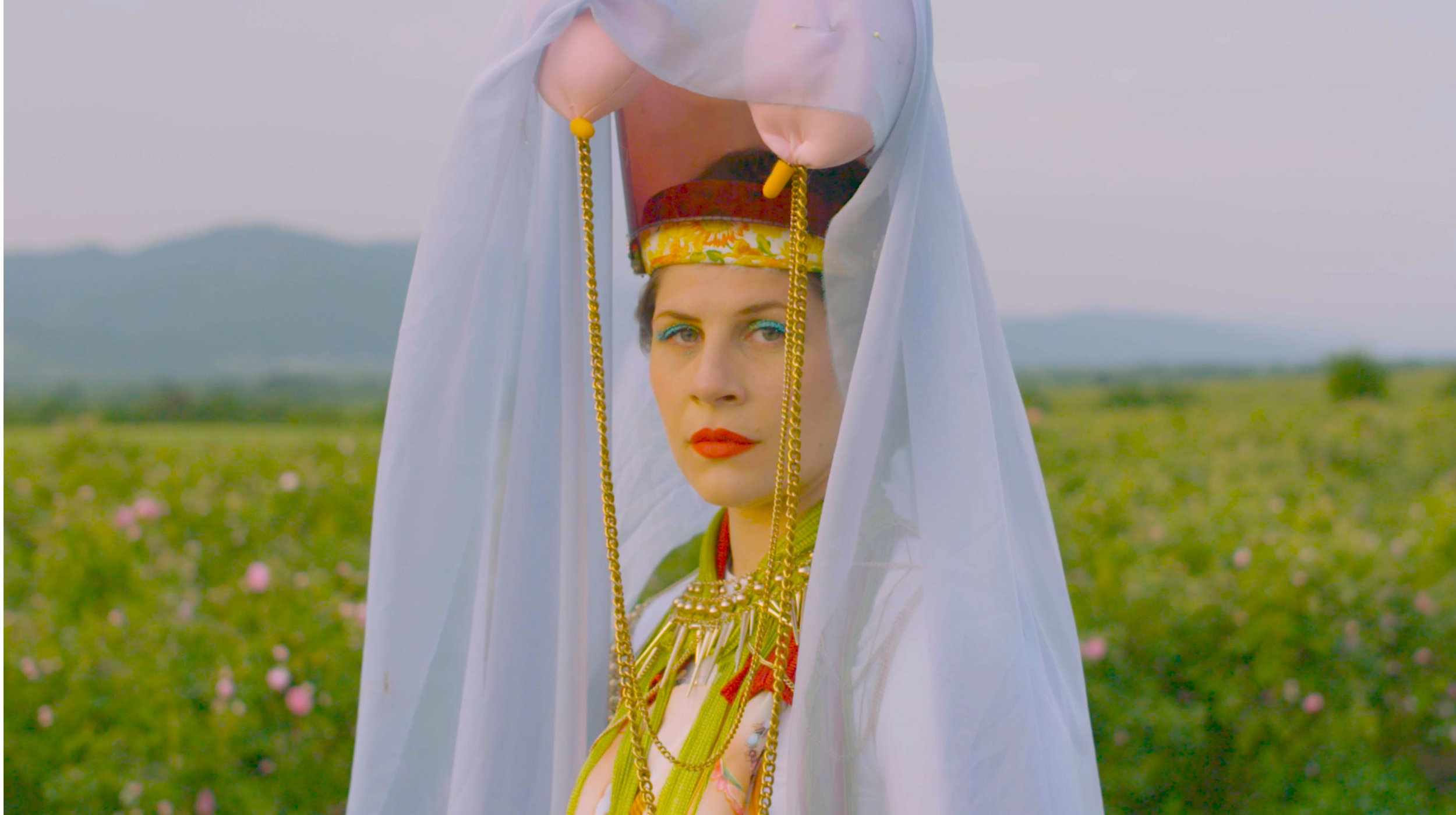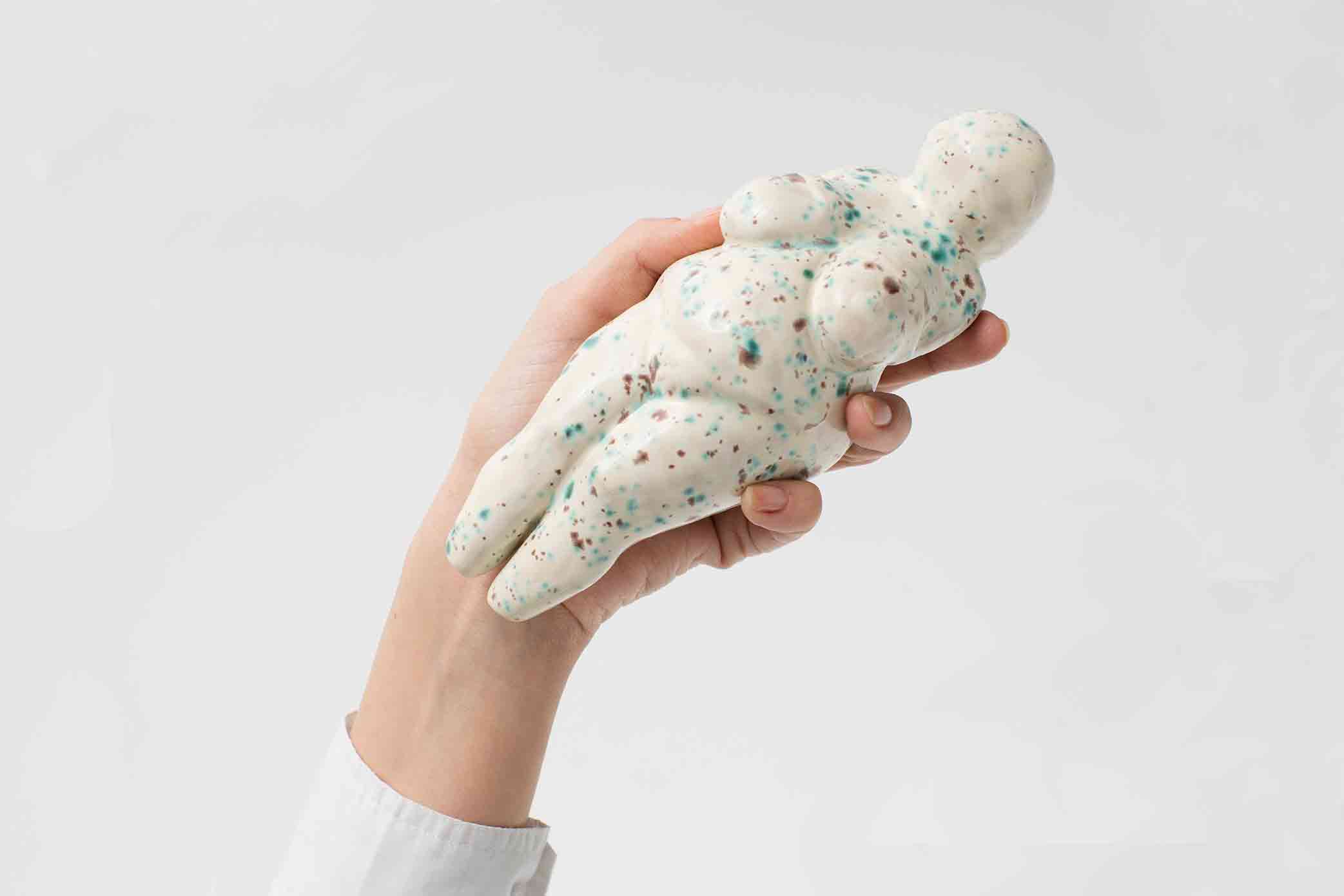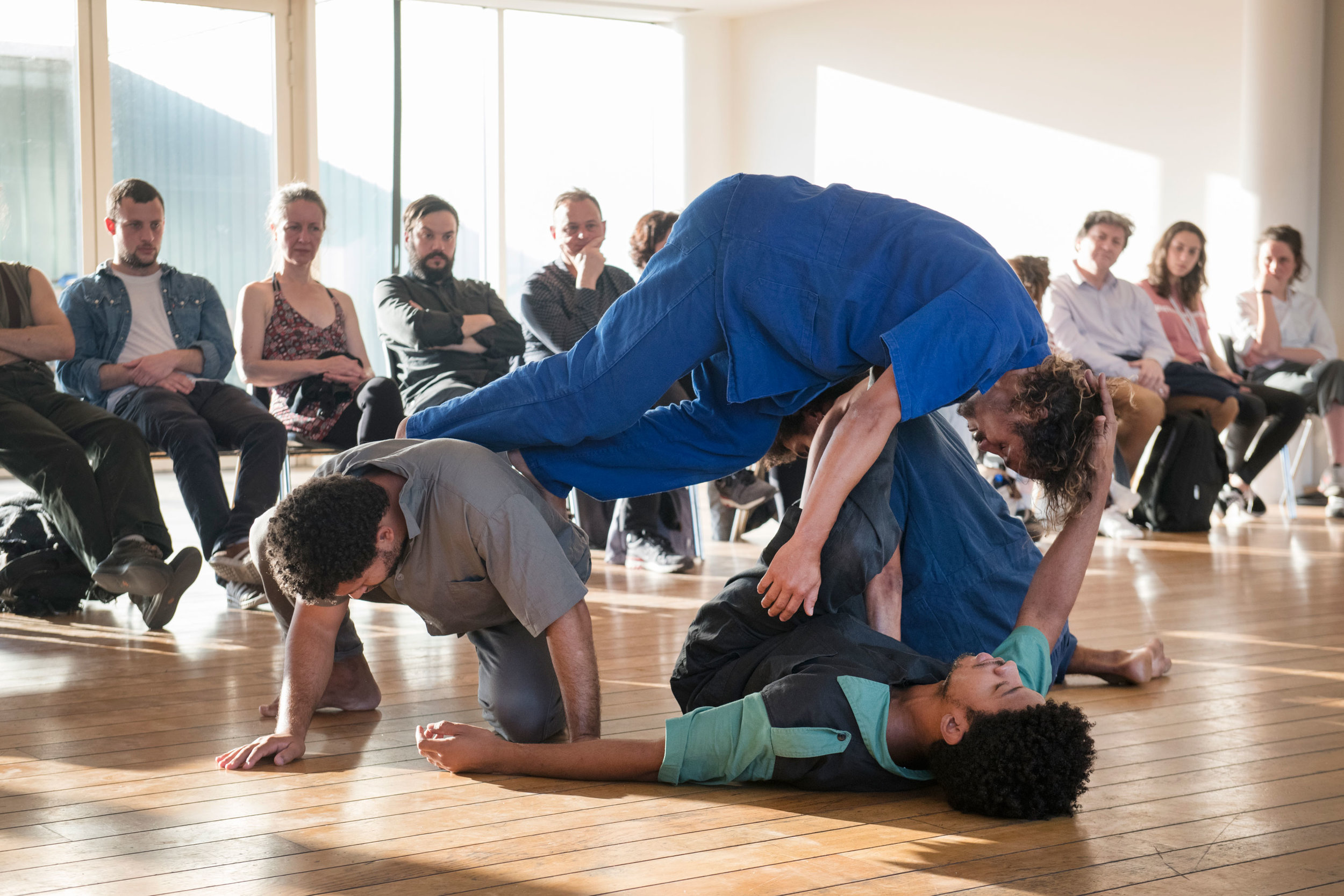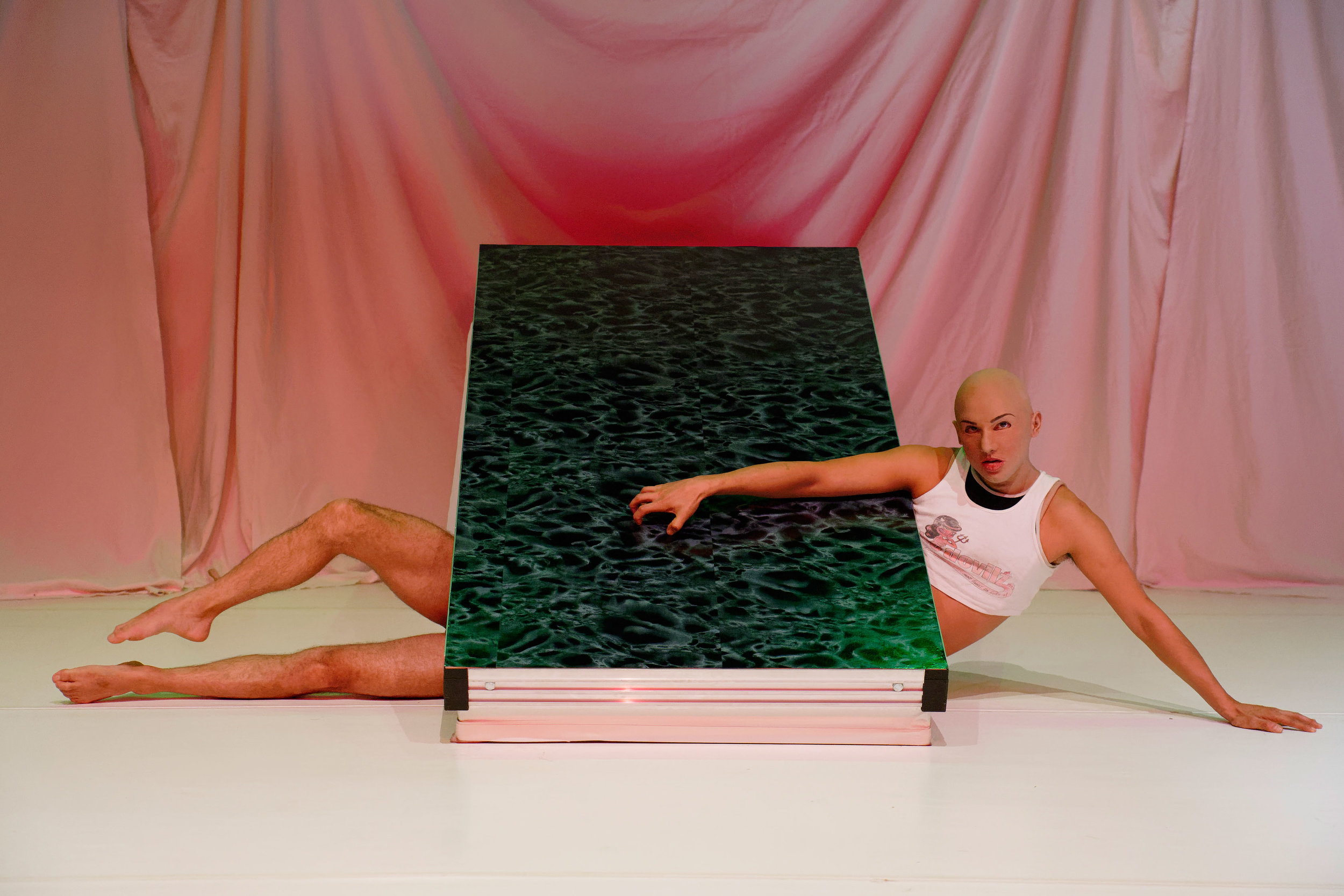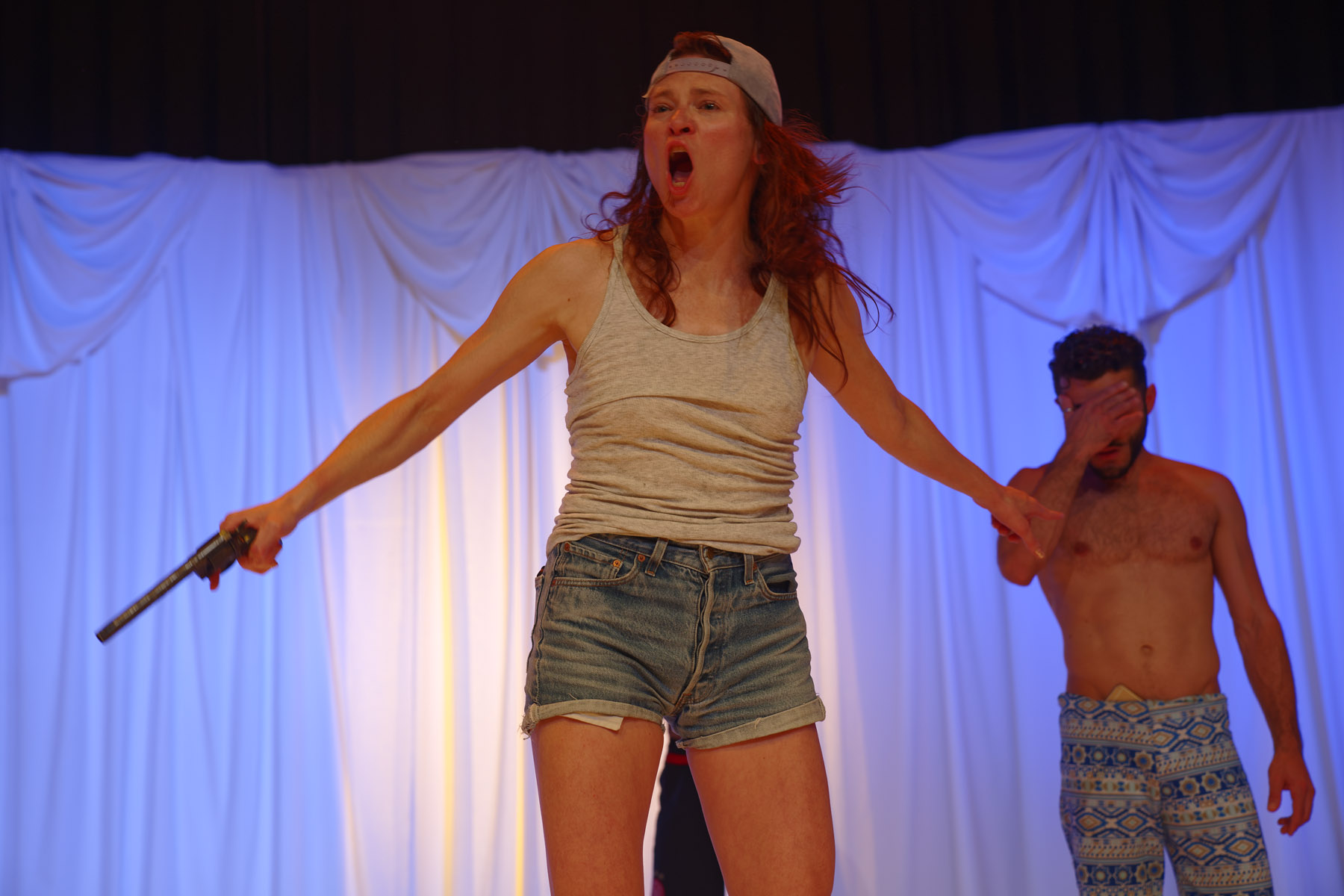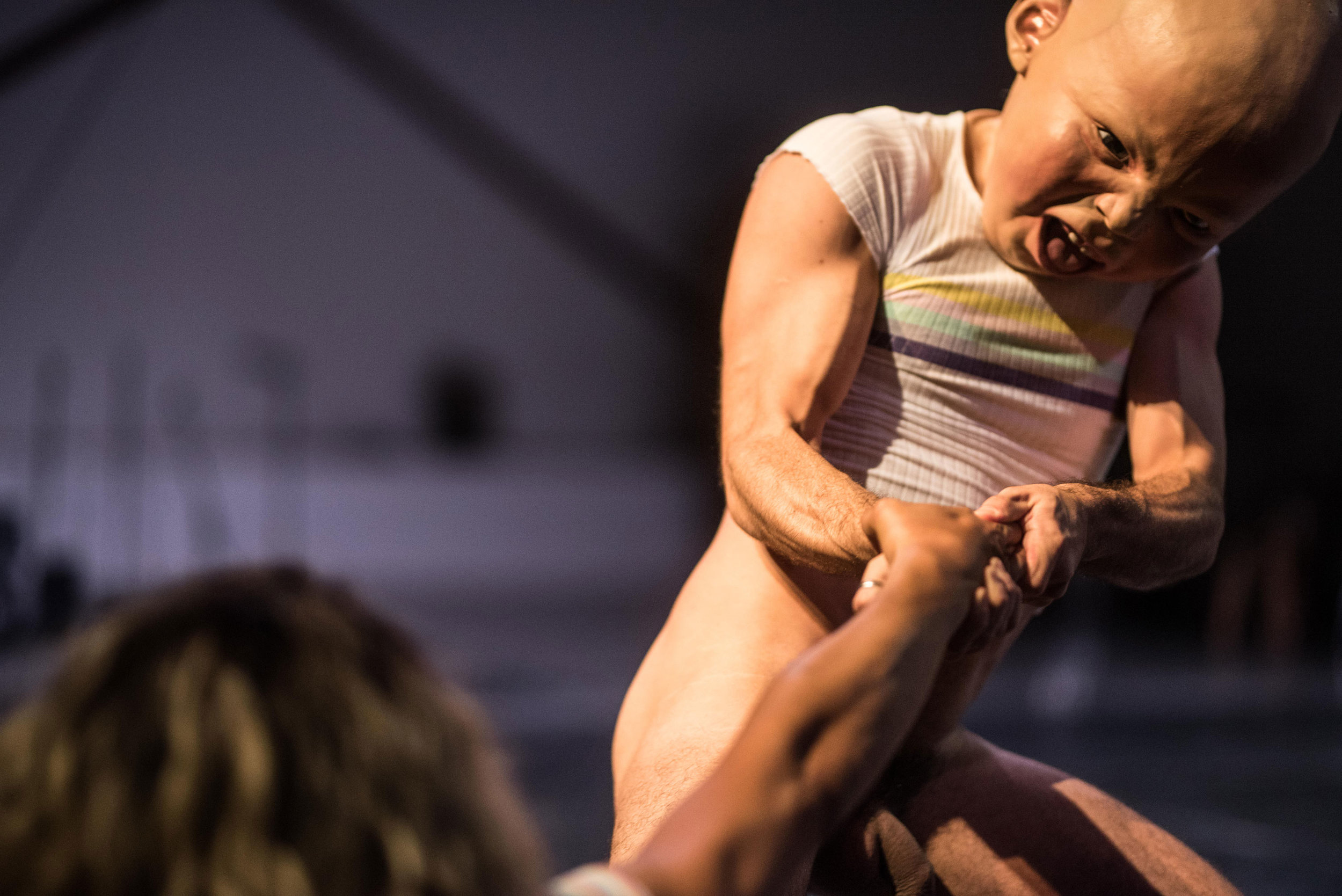
On Eating And Being Eaten
zürich moves! meldet sich mit einem Südamerika-Fokus zurück. Kernthematik der diesjährigen Festivalausgabe ist der kulturelle Kannibalismus. Daher auch der Titel «On Eating And Being Eaten». Essen und Gefressenwerden im Sinne von Aneignung kultureller Ausdrucksformen. Dabei stellt sich stets die Frage ob die Aneignung missbräuchlich, verletzend oder missachtend ist und welchem Zweck sie dient. Gerade in einer kulturell modernen, offenen und durchmischten Gesellschaft dürfen wir uns nicht auf Rosen betten. Das Festival möchte mit seinen Veranstaltungen daran erinnern, dass ein ständiges Justieren und Hinterfragen des eigenen Denkens und Handelns notwendig ist. Political Correctness alleine genügt schon lange nicht mehr.
Resistenz und Aktion sind gefragt!

Kalender
MO 8.4.
19.00—19.40, Tanzhaus Zürich
Marcela Levi, Lucía Russo
DEIXA ARDER
20.00—21.00, Tanzhaus Zürich
Tamara Cubas
ACT 2 - To Resist
21.30—22.00, Tanzhaus Zürich
Soya the cow
#MooToo
DI 9.4.
20.00—23.00, Cabaret Voltaire
Luis Garay
Oro Lodo
20.00—20.40, Cabaret Voltaire
Mavi Veloso
MUDA/MUTE
MI 10.4.
18.00—19.00, Tanzhaus Zürich
Suely Rolnik
Lecture
21.00—22.00, Club Zukunft
PRICE
Melodies are so far my best friend
DO 11.4.
18.00—19.00, Tanzhaus Zürich
Tanzsalon
20.00—23.00, Last Tango
Valerie Reding
why don’t you do right
21.00—21.30, Last Tango
Wellington Gadelha
GENTE DE LÁ
21.30—22.00, Last Tango
Victor Oliveira
Pôr Nu
FR 12.4.
18.00—18.30, Tanzhaus Zürich
Ivy Monteiro
TRINTA Y DOIS IGUAL A 5
19.00—20.00, Tanzhaus Zürich
Krassen Krastev, Christopher Füllemann
CLSTRS
21.00—22.00, Cabaret Voltaire
Steven Warwick & Carlos María Romero
HQ: (I feel so Mezzaniney)
SA 13.4.
14.00—20.00, OnCurating Project Space
Maëlle Gross
THIS IS YOUR CAPTAIN
19.00—19.30, Tanzhaus Zürich
Alice Ripoll / Cia REC
aCORdo
20.00—21.00, Tanzhaus Zürich
Vincent Riebeek
One of a kind
21.30—22.00, Tanzhaus Zürich
Alice Ripoll / Cia REC
aCORdo

Montag
8.4.2019
Marcela Levi & Lucía Russo
DEIXA ARDER (LET IT BURN)
In Let it Burn (Deixa Arder), bearbeiten Marcela Levi and Lucía Russo das Thema Identität indem sie ein diffuses Geflecht schaffen aus Referenzen an Musikgrössen wie: Thelonius Monk, Dizzy Gillespie, Nina Simone, Michael Jackson, Valeska Gert, Josephine Baker, Woody Woodpecker, Macunaima, Great Othello, Jorge Ben Jor, Mc Carol.
Aus nächster Nähe erlebt der Zuschauer wie die Performerin Tamires Costa zu Funk, Jazz und Pop einen burlesken und grotesken Tanz darbietet. In diesem „besessenen Tanzsolo“ wird geplündert und angehäuft, gestört und erschüttert. Let it burn – Lass es brennen!
In Let it Burn (Deixa Arder), Marcela Levi and Lucía Russo approach identity in a manner of stacking, in a complex and at the same time in a vertiginous way, remixing Thelonius Monk, Dizzy Gillespie, Nina Simone, Michael Jackson, Valeska Gert, Josephine Baker, Woody Woodpecker, Macunaima, Great Othello, Jorge Ben Jor, Mc Carol.
In a relationship of extreme closeness to the spectators, the performer, Tamires Costa, dances to the sound of funk, jazz and pop. The burlesque and grotesque body. To invade, to plunder, to pile up and to upset are the verbs that revolve this "haunted dance solo". Let it burn! Let the "I" burn!
About
In 2010, when they founded Improvável Produções, Marcela Levi and Lucía Russo committed themselves to a shared-authorship project, a form of artistic direction based on the open concept of different inventive positions intertwining in a process that gathers together lines that deviate from one another: dissent and internal differences seen as constructive critical force rather than contradictory, self-exclusive polarities. Their projects have been presented in various festivals and art centers in Latin America and Europe.
Levi studied at the Angel Vianna Dance School in Rio de Janeiro, has been a resident artist at Les Recollets Art Center in France, at Azala in Spain, guest artist at the London Cultural Olympiad and recipient of the Batiscafo scholarship in Cuba. She collaborated with Lia Rodrigues, Vera Mantero and Guillermo Gomez-Peña, among others.
Russo studied at the University of Buenos Aires and at the EDDC in Holland. She coordinated the project Dialogues: Interchanging processes of creation in Latin America within the Red Sudamericana de Dança and taught at the National University of Arts (UNA) in Argentina.
Credits
Artistic direction Marcela Levi & Lucía Russo Performance Tamires Costa Co-creation Tamires Costa and Ícaro Gaya Trainees Taís Almeida and Anne Naukkarinen Sound design all team Costume design Levi & Russo Light design Catalina Fernández
Supported by Centro Coreográfico do Rio de Janeiro/Secretaria Municipal de Cultura, Consulado da Argentina no Rio de Janeiro, Espaço Cultural Sitio Canto da Sabiá and Projeto Entre Distribution Something Great Production Improvável Produções
Photocollage ©Ícaro Gaya Photo ©Marcela Levi
MO 8.4. um 19.00
35 min
Tanzhaus Zürich
Tamara Cubas
ACT 2 – TO RESIST
Über 1500 verstreute Holzbretter bieten in „Act 2 – To Resist“ den wackligen Boden für einen einstündigen Ausnahmezustand. Die erzeugten Vibrationen der instabilen Oberfläche stärken dabei den rauschhaften Widerstand der fünf Tänzer*innen. Sie versinnbildlichen eine neue Form des Zusammenlebens, befreit von übergeordneten Autoritäten.
”To Resist”" ist der mittlere Teil von Tamara Cubas’ Anthropophagie-Trilogie, in der sie drei choreografische Werke aus Brasilien, dem Ursprungsland der kulturellen Anthropophagie-Bewegung, die in den 1920er-Jahren als Antwort auf die europäische Dominanzkultur gegründet wurde, verarbeitet. To Resist versteht sich als ein Akt des Widerstands gegen die Kommerzialisierung unserer Gefühle und Körper, aber auch gegen die Institutionalisierung und Hierarchisierung menschlicher Beziehungen.
Over 1,500 scattered planks of wood in “Act 2 – To Resist” provide the shaky ground for a one-hour state of emergency. The vibrations generated by the unstable surface reinforce the trance-like resistance displayed by the five dancers. They symbolise a new form of living together, liberated from superordinate authorities.
”To Resist” is the middle part of Tamara Cubas’ Anthropophagic Trilogy, which examines three choreographic works from Brazil, the origin of the cultural anthropophagic movement established in the 1920s in answer to the European culture of dominance. To Resist is intended as an act of resistance against the commercialisation of our emotions and bodies but also against the institutionalisation and hierarchisation of human relationships.
About
Tamara Cubas (b. 1972 in Montevideo) lived in political exile with her parents in Havana until the age of 13 before returning to her native Uruguay. The dichotomy between the individual and the collective, concepts of power and institution, decolonisation and all kinds of social and political organisation are just a few examples of the subjects Tamara Cubas tackles in her choreographic and visual projects.
Credits
Directed by Tamara Cubas Light and sound design Leticia Skrycky Performers Santiago Turenne, Alina Ruiz Folini, Mariana Marchesano, Tamara Gómez, Bruno Brandolino Based on Matadouro by Marcelo Evelin Production Perro Rabioso Distribution Key Performance Technician Santiago Tricot Textquellen Deutsch Tanzquartier Wien
Photo ©Nacho Correa
MO 8.4. um 20.00
60 min
Tanzhaus Zürich
Soya the cow
#MooToo
MO 8.4. um 21.30
Tanzhaus Zürich
“Dairyfree? Is this how you want me to be?” – Soya ist die erste Drag Kuh der Welt und sie hat was zu sagen. Für ihr Debüt in Zürich kombiniert Soya einige ihrer Songs mit spoken words und bovine eleganza. Sie nimmt Dich mit auf eine Reise von ihren Erfahrungen in der Hölle (auf Erden) bis zu einem utopischen Traum von speziesübergreifendem Frieden und Harmonie. Wie würde unser Leben aussehen, wenn wir damit aufhörten, uns gegenseitig in Stücke zu schneiden? Soya wird ihren Hintern und an Deinem Weltbild rütteln – bis jeder Nippel frei ist.
“Dairyfree? Is this how you want me to be?” – Soya is the world’s first drag cow and she has something to say. For her debut in Zurich, Soya combines some of her songs with spoken words and bovine eleganza. She takes you on a journey from her experiences in hell (on earth) to a utopian dream of interspecies peace and harmony. What would life be like, if we stopped chopping each other into pieces? Get ready to see her shake her ass and your worldview – until every nipple is free.
About
Soya is a gender- and species-bending drag cow. She unites queerfeminist ideas with animal rights activism, high fashion and poetry. Since her debut at the Animal Rights March in front of the legendary Volksbühne Berlin, she appeared in discussion forums and protests. She gives workshops about consent, and performs on stages of theatres and nightclubs, as well as in public space. At the moment she’s also working on her first music album. https://www.instagram.com/soyathecow/
Credits
Concept, Texts, Composition & Performance Soya the cow Costume, Hair & Make-up Valerie Reding Mask & Udders Nagi Gianni Music Production Phil Constantin Production Management Lisa Letnansky
Photo ©Maya Rochat

Dienstag
9.4.2019
Luis Garay
Oro Lodo (Gold Mud)
Die Performance Oro Lodo (Golddreck) strebt mit grosser Dringlichkeit danach, die Fiktion des Materiellen zu entlarven, wonach alles, was nicht wir sind, uns mit Leben füllt. Luis Garay schafft Umgebungen, in denen Arbeit und Freizeit, Produktion und Reproduktion untrennbar sind. Der Titel Oro Lodo bezieht sich auf den Neobarroso, der vom queeren Schriftsteller und Aktivisten Nestor Perlongher (*1949, Argentinien; †1982, Brasilien) begründet wurde. In dieser verrückten Idee der Rückkehr eines dreckigen Neobarocks sucht das Stück nach einem Schlüssel zur Interpretation der Gegenwart, die voll ist von endlosen Wiederholungen und einer nutzlosen Üppigkeit. Das Stück ist ein Experimentierfeld für Verknüpfungen und Wahrnehmungen, die sich als Gegenvorstellung dessen ergeben, was der Mensch darstellt.
Oro Lodo works with material fictions where all that is not us is actually animating us. Through proliferation of signifiers, iteration without end and useless voluptuousness, the work creates a landscape where leisure and work are inseparable. Using the twisted idea of a return to a soiled and mudy neo baroque (proposed by Argentinian writer and activist Nestor Perlongher) the piece is a testing zone to assemblage other couplings and states of perception that arise from a counter-imagery of what is represented as human.
About
Luis Garay deals with detailed environments where ideas of labour and exercise explore simultaneous states of pleasure, alienation, emptiness and shared agency. He is constantly interested in the question of where a body is. This concern for "localization" traces the constant rendering of subjectivities without coordinates, in exile. He presented recently at The Walker Art Center, Minneapolis, The Vienna Festival, Matadero Madrid, Kyoto Experiment Japan, Pompidou Metz, Theater International de la Cite, Paris, Montpellier Danse, SESC Sao Paulo, Panorama Festival Rio de Janeiro, among many others.
Credits
Artistic direction Luis Garay Performance Daniel Pizamiglio, Patrick Faurot, Julián Pacomio Sound assistant Javier Alvear Velez and Francois Pisapia Supported by Prodanza, Museum of Modern Art of Buenos Aires (MAMBA)
Photo ©Triana Leborans
DI 9.4. um 20.00
180 min
Cabaret Voltaire
Mavi Veloso
MUDA/MUTE
Dieses Mal begann ich auf dem Boden. Etwas wird geschehen: Eine Explosion, die Zerstörung aller Ideen. Mit geschlossenen Augen halte ich das Mikrofon in meiner Hand. Ich lasse es über den Boden streichen, zeichne mit den Geräuschen eine Karte meiner Wege. In kompletter Dunkelheit lässt nur das Blitzlicht der Kameras erahnen, wie sich Bilder allmählich entwickeln. Können wir uns in Sicherheit wägen? Ich drehe die Lautstärke auf: Ich muss dich hören. Du musst mir zuhören. Dieser Soundtrack wird zu unserem Liebespakt. Ich tanze, krieche und gehe. Als ob diese Dunkelheit eine Revolution herbeiführen könnte.
MUDA/MUTE (stumm) ist Teil des Projekts #iwannamakerevolution. Eine Recherche, welche Mavi Veloso im Master of Voice am Sandberg Institut in Amsterdam, im Postmaster an der A.PASS in Brüssel sowie in Residenz bei ArtsEverywhere.ca erarbeitet hat. iwannamakerevolution.artseverywhere.ca
This time I started on the floor. I was afraid that what was going to happen could be a big destruction, something to explode everyone’s ideas. With eyes closed, I have the microphone in my hand. I touch it on the floor as if sticking the surface with sound could map me wherever to go. In complete darkness, camera flashes are the only way to highlight images gradually in development. We wonder if there’s possibility to be safe until the end. I turn up the sound as high as possible. I need to hear you, you need to hear me, we need to hear what. So how can we make this soundtrack become our pact of love? How can we make this noise witness the crime between you and I? I dance, I crawl, I walk... As if this blindness could turn revolution something possible.
MUDA/MUTE is part of the project #iwannamakerevolution, a research conducted at Master of Voice at the Sandberg Instituut in Amsterdam, postmaster research at A.PASS in Brussels, Belgium, and project in residency at ArtsEverywhere.ca iwannamakerevolution.artseverywhere.ca
About
Mavi Veloso is a Brazilian performer based in Amsterdam who works transdisciplinary integrating visual art, dance, theater and music. Her work explores performativity, the relationship between performer and audience, trans feminism and decolonization. As a transgender migrant from South America to Europe, Mavi seeks to embody and appropriate the transformation process, psychological, social and physical, conflicts and cultural adaptation procedures, as well as fashion, queer, trans and drag queen elements to question gender technologies, notions of identity, sexuality, placement and displacement. She has presented in venues and festivals including the van Abbemuseum in Eindhoven, Kampnagel in Hamburg, Kunstenfestivaldesarts in Brussels, Les Urbaines in Lausanne and the 31st Biennial of São Paulo.
Credits
Concept and performance Mavi Veloso Collaboration during creation process Caio Cesar Collab in sound research Glenn Ryszko Collab in past performances Raphael Daibert, Olga Dimitrijević Many thanks to Thiemi Higashi (video maker), COMO Clube São Paulo, Advanced Performance and Scenography, Pierre Rubio, Lilia Mestre, Perform Back Score Sessions, Nicolas Y Galeazzi, Elke van Campenhout, Adva Zakai, Peter Stamer, Philippine Hoegen, Performing Arts Forum, Sign 6 Brussels, Free Home University, Ammirato Culture House (Lecce), Master of Voice, Lisette Smiths, Marnie Slater, Paul Elliman, Dorothé Orczyk, Snejanka Mihaylova, all colleagues from Master of Voice/Sandberg Instituut, Suzy Block, Dansmakers, @Jacuzzi Amsterdam
Photo ©Mark Rietveld
DI 9.4. um 20.00
40 min
Cabaret Voltaire

Mittwoch
10.4.2019
Suely Rolnik
Creating body for life demands: notes on micropolitical combat
Vortrag / Lecture (in English)
Die vorherrschende Macht greift heutzutage stark in den mikropolitischen Bereich ein und schafft die finsteren Landschaften, in denen wir weltweit leben. Diese spezifische Art von Gewalt missbraucht die Lebenskraft der Biosphäre, deren Hauptaufgabe es ist, neue Spezies hervorzubringen, wann immer es für den Erhalt des Lebens auf der Erde notwendig ist. Der Mensch missbraucht seine kreative Schaffenskraft jedoch, indem er sie nicht mehr gemäss ihrer ethischen Bestimmung einsetzt. Es ist dringend notwendig, die durch diesen Missbrauch verursachten unbewussten Verletzungen rückgängig zu machen und die entstandenen Formationen im sozialen Bereich aufzugeben – und mit ihnen unsere Rollen und damit verbundenen Körper und Lebensstile. Dabei verschwimmen die Grenzen zwischen Kunst, Therapie und Politik.
Power today strongly intervine in the micropolitical sphere, producing the sinister landscape we are living all over the planet. Its specific type of violence consists in the abuse of the vital forces of the biosphere, whose essence is the creation of new forms, whenever it is needed for the perseveration of life. In human species, this means the abuse of creating drive, diverting it from its ethical destiny. It becomes urgent to undo the unconscious that has been structured by abuse, abandoning its formations in the social field and, with them, our characters in their scenes, performing new characters, their bodies and their ways of living. In this process the boundaries between art, therapeutics and politics become indiscernible.
About
Brazilian psychoanalyst, writer and Full professor at PUC São Paulo. She obtained Bachelor and Master degrees in Sociology and Philosophy (Sorbonne Paris 8) and in Clinical Human Sciences (Sorbonne - Paris 7); a Clinical Ph.D (Sorbonne - Paris 7) and a Social Psychology Ph.D (PUC-SP). She authored many books and essays in diferent langages. Her books in German or English: Zombie Anthropophagie. Zur neoliberalen Subjektivität. (Turia + Kant: Vienna/Berlin, 2018), Archive mania (HatjCantz /Documenta 13, 2011) and, with Félix Guattari, Molecular Revolution in Brazil (Semiotext: NY, 2006). She is the creator of the Archive for a work-event, on Lygia Clark’s oeuvre (65 film interviews, 20 of which has been edit in France and Brazil). She is the translator in Portuguese of Deleuze and Guattari’s, Mille Plateaux (Ed. 34, 1997), among others.
In Collaboration with Dokumentartage Basel - It’s The Real Thing
Photo ©Flaviana Ox
MI 10.4. um 18.00
60 min
Tanzhaus Zürich
PRICE
Melodies are so far my best friend (club version)
MI 10.4. um 21.00
Tür 20.00 / 60 min
Club Zukunft
Mathias Ringgenberg alias PRICE hinterfragt mit Melodies are so far my best friend Sprache und Handeln seiner Generation. Er stellt fest, dass die eigene Identität und eine oberflächliche Form der Sprache im Vordergrund stehen. Sprache wird vor allem als Ausdruck einer Maschinerie erlebt, die dem Kapitalismus dient. Mittels seiner Kunstfigur PRICE – ein Mischwesen, das dank seiner hybriden Eigenschaften unterschiedlichste Perspektiven einzunehmen vermag – nähert er sich diesen Symptomen.
Durch die Begegnung in der Improvisation mit der Musikproduzentin Cecile Believe und dem Pianisten Sebastian Hirsig macht PRICE durch musik-performative Acts die Erfahrung des Dazwischen möglich und belebt den Raum mit den Fragen: Welches sind die Identitäten der Sprache heute? Und welches sind mögliche Identitäten durch Sprache?
With Melodies are so far my best friend, Mathias Ringgenberg alias PRICE questions the language and the actions of his generation. He establishes that individual identities and superficial use of language prevail. Language is primarily experienced as the expression of machines that serve capitalism. Ringgenberg approaches these symptoms by means of his fictional character PRICE – a hybrid creature that is capable of taking on a wide variety of perspectives.
Through his improvised encounters with music producer Cecile Believe and pianist Sebastian Hirsig, PRICE enables the inbetween to be experienced through performative musical acts and enlivens the space with the questions: What indentities does language have today? And which identities are made possible through language?
About
Performing Artist Mathias Ringgenberg aka PRICE, *1986 in Rio de Janeiro, lives and works in Zürich. In his current performative works called, Where Do You Wanna Go Today (Variations), Can’t say much about anything that’s new and the associated debut album Greatest Hits or his video performances A: I am impressed B: Well - I am in love, Home is a place we all have to find or You don’t touch it, it touches you, Mathias developed the fictional character PRICE. PRICE is a hybrid fictional character born from the sea of information, who explores the emotional disorientation of a generation having grown up with mass culture, neoliberalism and the omnipresence of the internet. By probing the mechanisms of pop, PRICE’s musical stories evoke instability, fear, and romantic disillusion.
Credits
artistic direction PRICE (Mathias Ringgenberg) music and performance PRICE music production Cecile Believe piano Sebastian Hirsig light and camera Mirjam Graf stage costume design in collaboration with BARRAGÁN dramaturgy Tom Engels movement research Isabel Lewis co-production Arsenic – Contemporary Performing Arts Center Lausanne, Tanzhaus Zürich, Life Long Burning EU This project is supported by Pro Helvetia, Swiss Cultural Foundation and Fondation Nestlé pour l'Art
Photo ©Reto Schmid

Donnerstag
11.4.2019
Tanzsalon – Archive meets artists
Using a cultural heritage
Conversation between Brigitta Luisa Merki and Rahel Leupin (in English)
Das Schweizer Archiv der Darstellenden Künste (SAPA) präsentiert gemeinsam mit dem Tanzhaus Zürich zum vierten Mal eine Begegnung mit einer Künstlerpersönlichkeit und deren Video-Archiv. Brigitta Luisa Merki übernahm 1994 die Künstlerische Leitung von Flamenco en route. Vorangegangen war eine lange Zusammenarbeit mit den beiden Flamenco-Künstlern Susana und Antonio Robledo. 2004 erhielt Brigitta Luisa Merki den Hans Reinhart Ring für ihre innovative Arbeit, welche auf lebendiger Tradition und Kontinuität basiert. Im Rahmen von zürich moves! befragt sie die Kulturwissenschaftlerin Rahel Leupin zum Thema Kulturelles Erbe. Archivmaterial des SAPA wird gezeigt und das Publikum ist eingeladen, mitzudiskutieren.
The Swiss Archive of Performing Arts (SAPA) presents in tandem with the Tanzhaus Zurich for the fourth time an encounter with artists and their video archive. Brigitta Luisa Merki took over the artistic direction of the company Flamenco en route in 1994, after a long collaboration with two major Flamenco artists Susana and Antonio Robledo. 2004 she was awarded with the Hans Reinhart Ring for her innovative work based on living tradition and continuity. For the festival zürich moves! she will be interviewed by the cultural scientist Rahel Leupin about the use of a cultural heritage. Video archive from the SAPA will be shown and a discussion engaged with the audience and artists of the festival.
About
Die Stiftung SAPA, Schweizer Archiv der Darstellenden Künste, sammelt, dokumentiert, archiviert und verbreitet in der Schweiz produzierte, mit der Schweiz in Verbindung stehende oder für sie bedeutende Werke aus dem Bereich der Darstellenden Künste.
Credits
Photo ©Alex Spichale
DO 11.4. um 18.00
75 min
Tanzhaus Zürich
Valerie Reding
why don’t you do right
interaktive Langzeit-Performance / long-durational interactive performance im Rahmen von / in the frame of www.lasttango.info/sarah-margnetti-megan-rooney
Ich erinnere mich ganz genau an das erste Mal, als ich Drag gemacht habe: Ich zog meine zwölf Zentimeter hohen Hacken an, quetschte mich in einen giftgrünen Plissé Minirock und ein fuchsiarotes, trägerloses Top, legte meine platinumblonden Haare ein und benutzte den einzigen Lidschatten, den ich damals besaß - ein schimmerndes Hellblau - um dem Look den letzten Touch zu geben. Ich wollte all diesen Jungs zeigen, dass ich intelligent sein und Bombe aussehen kann - und gleichzeitig für sie unerreichbar bin. Ich atmete tief ein und öffnete die Tür… Ich war 13 Jahre alt und ging so in meine Mathematikklasse im Gymnasium.
„Wir werden nackt geboren, alles andere ist Drag“, meinte RuPaul und argumentierte dann, dass weder cis- noch trans-Frauen beim Drag Race teilnehmen dürfen, da „Drag das Gefühl von Gefahr und Ironie verliert, sobald es nicht von Männern gemacht wird“. Wenn weibliche* Körper Femininität performen, wer bestimmt wer an wen eine Hommage macht, wer das Recht auf Subversion hat und schliesslich: wer eignet sich hier wirklich Femininität an und von wem?
I remember very vividly the first time I did drag: I put on my five inch heels, squeezed myself into a chartreuse green pleated miniskirt and a bright fuchsia strapless top, curled my platinum blonde locks and used the only eyeshadow I owned - a shimmery pastel blue - very generously on my eyelids to complete the look. I wanted to show all these boys that I can be intelligent and look smoking hot - and totally unreachable for them. I took a deep breath in and opened the door… I was 13 years old and walked into my mathematics class at college.
“We’re born naked, everything else is drag”, RuPaul said and then argued, why no cis- nor trans-women should be allowed on Drag Race, because “drag loses its sense of danger and its sense of irony once it’s not men doing it”. When fem bodies perform femininity, who is to say who is paying tribute to whom, who has the right to subverting what and ultimately: who is really (re-)appropriating femininity from whom?
About
Valerie Reding works at the intersection of performance, dance, photography and video. Exploring the potential of vulnerability, transformation and elements of drag, she inquires gender roles and norms of bodies, identities and sexualities. Her work has been shown in galleries such as Commonwealth & Council and FORMA Arts Contemporains, at festivals like zürich moves!, The Queer Biennial II, La Fête du Slip and Porny Days as well as at theaters like Tanzhaus Zürich, Arsenic and CounterPulse. www.valeriereding.com
Credits
concept, performance, costume and set design Valerie Reding technical support David Baumgartner dramaturgical advisor Marc Streit Assistance Nico Dubosson
Photo ©Valerie Reding
DO 11.4. um 20.00
180 min
Last Tango
Victor Oliveira
Pôr Nu (Put Naked)
im Rahmen von / in the frame of www.lasttango.info/sarah-margnetti-megan-rooney
Pôr Nu ist eine körperliche Begegnung zwischen Performer und Zuschauenden mit dem Ziel, einen gemeinsamen Zustand zu finden und Zusammengehörigkeit zu erleben. In unmittelbarer Nähe exponiert Victor Oliveira seinen Körper, dessen Löcher und Genitalien. Post-Porno-Körper, Körperobjekt, begehrender Körper. Er steht dabei auf einem hölzernen Stuhl, sein Körper ganz mit Öl eingeschmiert. Der Körper ist sich seiner fleischigen Konstitution bewusst, öffnet und schliesst seine Löcher, produziert Schweiss, kommt zum Höhepunkt, atmet aus und beschafft sich Erleichterung. Pôr Nu ist ein Schweisskunstwerk für einen Post-Porno-Körper, ein Körperobjekt, einen begehrenden Körper, das sich mit den eigenen Störungen, Grenzüberschreitungen und mit Cross-Gender auseinandersetzt.
Pôr Nu is a bodily encounter between the performer and the audience. It proposed to find a common state and experience toghetherness. The actions proposed in sheer proximity expose the body, its holes, and genitals. Post-porn-body, Body-object, Desiring-body. The performer Victor Oliveira stands on a wooden stool, with the body fully covered in oil. Aware of its fleshy constitution, the body opens and close holes, produces sweat, spurs, exhales, works on all kinds of releases. Pôr Nu springs as a sweat art piece, dealing with its own disorders, its own transgressions and experiencing gender-crossings.
About
Victor Oliveira (Brazil, *1994) is an artist, researcher and performer interested in the power of the body to queer normality. Among his creations, stand out: Pôr Nu at Greve Geral (2018); Missa do Corpo at II Festfic (2017); Mycobacterium at the Seminar Trans-Incorporados at the Rio Art Museum (2017). Oliveira is currently pursuing his degree in Dance at the Federal University of Rio de Janeiro and is a member of Improvável Produções Artísticas, a contemporary Dance company by Marcela Levi e Lucia Russo.
Credits
Conception, creation and interpretation Victor Oliveira Production Jorge Soledar Creation space Lab_Performance, EBA - UFRJ Acknowledgments Vinicius Oliveira, Andrea Martins, Idris Bahia, Mario Netto, Uira Clemente, Rafael Amorim, Jorge Soledar, Felipe Ribeiro, Eleonora Artsenky, Tais Almeida, Lucas Fonseca, Rogeria Feminino, Filipe Nantel, Yuri Dias, Juliana Ribeiro Whaner (Collective Quadro Vivo), Nadam Guerra, Cande Costa, Cecilia Cotrim, Rayan Pires Sarmento, Thaina Farias, Improvável Produções Artísticas, Phabrika das Artes, Z42 Arte Contemporanea and Espaco Montagem
Photo ©Silvana Marcelina
DO 11.4. um 21.00
30 min
Last Tango
im Rahmen von / in the frame of www.lasttango.info/sarah-margnetti-megan-rooney
Gente de lá (Leute von dort) ist eine schwarze, transversale Arbeit aus den Vororten des nordöstlichen Brasiliens, die Rassenungleichheiten auf poetische Weise denunziert und gleichzeitig die soziale Konfrontation sucht. Sie bringt ihre eigenen Dringlichkeiten hervor, vermischt das Politische und das Persönliche, richtet ihren Blick aber auch auf verstörende Themen wie das Gefängnissystem, Massenmorde an der schwarzen Bevölkerung oder die Favelakultur. Die Bewegung als Antwort auf eine zufällig ausgerichtete Waffe gehört zu den Haupttänzen des urbanen, schwarzen Favelakörpers. So entsteht die Notwendigkeit zu tanzen, verschiedene Arten des Widerstandes zu erproben und Territorien zu überdenken, während stets mit den Gewalttaten der meist räumlichen Rassensegregation gerechnet werden muss. Mit Gente de lá richten wir die Waffe auf die Gegenseite – und wir sind bereit, abzudrücken!
Gente de lá (People from out there) is a black, transversal work which comes from the outskirts of Northeast Brazil to, at once, poetically denounce racial inequalities and propose social confrontations. While Gente de Lá renders its own urgencies and mingles politics and subjectivities, it also regards disturbing issues such as the policies of the prisional system, the mass murders of black population, and the favela culture. Moving under the random spin of a gun has been the major dance of a urban-black-favela body. Thus, the need to dance Gente de Lá and connect different means of resistance, rethink territories, and reckon with violences of racial-often-spatial segragations. Gente de lá becomes our way to point back and have the trigger ready to be pulled!
About
Gadelha is a Brazilian artist, developer of the Afrontamento (Confronting) Platform. His interests range from Performance Art to video, installation works, and imersive processes in art and technology, specially soundscapes. Gadelha collaborates also with collectives of artists and grassroots organizations concerned with human rights issues, peripherical cultures, and black youth. His current project, Gente de Lá has been awarded the Rumos Itau Cultural prize and Premio Funarte de Artes Visuais.
Credits
Conception, dramaturgy, and sound design Wellington Gadelha Music Production Dj Pedro Ribeiro Set design Wellington Gadelha, Emanuel Oliveira Dramaturgical collaborators Luiz de Abreu, Leonardo França, Thereza Rocha, Andréa Bardawil Graphic Design Diogo Braga Production Plataforma Afrontamento Partnerships Trincheira, Escola Porto Iracema das Artes, Galpão da Vila Funded by Rumos Itaú Cultural
Videos and Photo ©Priscilla Sousa, Luiz Alves

Freitag
12.4.2019
Ivy Monteiro
TRINTA Y DOIS IGUAL A 5
Trinta Y Dois Igual a 5 ist ein rhythmisches Performance-Experiment – nonlinear, nonkonform und unverfroren. Mit seinem neusten Projekt ruft Ivy ein dissidentes Afrokollektiv mit dem Namen L.O.S.S. ins Leben, was für Lovely Outrageous Savage Sounds steht (auf Deutsch etwa: entzückende, empörende, barbarische Klänge). Während 32 Jahren haben sie die «kochend heisse Wüste des Lebens» durchquert, und doch ergibt 3+2 immer noch 5. Fünf Punkte, fünf Elemente und fünf Schwerter bestimmen ihr Leben, wohin auch immer sie gehen – ein Pentagramm, das sich wie ein Käfig um ihre entfremdete körperliche Erfahrung schliesst. In einem ewigen Kreis von Liebe, Hass, Frieden und Krieg – übertragen in Musik, Rhythmus und Bewegung – lehnen sie sich gegen diese Existenz auf und versöhnen sich schlussendlich mit ihr.
Trinta Y Dois Igual a 5 is rhythmical & experimental performance; non linear, non conforming and non apologetical. In this latest venture, Ivy conjures an afro dissident collective, going by the name of L.O.S.S. (Lovely Outrageous Savage Sounds). They have taken 32 years to cross the Scalding Desert of Life and after all this time, 3+2 still equals 5. Five points, five elements and five swords, ruling their lifes, wherever they possibly go. Like a pentagram, drawing a cage around their alienated bodily experience. They recognize it, they rage against it and make peace with it in a continuous circle of love, hate, peace and war - all translated in music, rhythm and movement.
About
Ivan "Ivy" is a developer of practices and performative roles in Dance, Music, and Visual Arts. They are a natural shapeshifter, re-imagining femininity, gender, social and race expectations through (dis)identifcation. Furthermore, Ancestrality and Spirituality are reshaped and envisioned in queer afro latinx futuristic pieces. Ivy has their work presented at Counterpulse (San Francisco), Queer InfectionLab (Rome), Museum of Image and Sound (São Paulo), Cuntemporary (London) among others.
Credits
Concept Ivy Monteiro Creation Ivy Monteiro
Performance Support Tracy September, Nilo Stillhart, Lydia Perrot and Ivy Monteiro Mentoring Marc Streit Production Support Hans Manz (Theatre Neumarkt)
Sound Support Tracy September
FR 12.4. 18.00
30 min
Tanzhaus Zürich
Krassen Krastev
CLSTRS
Ein choreographisches Stück für zwei Personen, zur Inspiration für CLSTRS dienten verschiedene Ausdrucksformen der traditionellen Unterhaltung wie Cabaret, Burlesque und Revuetheater, in denen deutliche soziale Konstrukte und eindeutige Geschlechterrollen dargestellt werden. An der Schnittstelle von Gegenwart und Zukunft öffnet CLSTRS einen utopischen Horizont von unendlichen Möglichkeiten. Hybridartige Körper, im konstanten Wandel formen einen Klumpen ohne klare Trennung von Maskulinität, Femininität sowie biologischen und technologischen Polen. Diese Arbeit fragt nach dem menschlichen Ideal in einer unbestimmten Zukunft und woraus dieser leibliche Umschlag geschaffen sein wird.
A choreographic piece for two people, CLSTRS draws its inspiration from various entertainment traditions – such as cabaret, burlesque and the musical revue – which render visible the social construction of bodies and gender. Moved by a tension between the present and an indeterminate future, it opens onto a new horizon of utopia, offering an infinite range of possibilities represented by hybrid and ever-changing bodies, as the result of a cluster between the masculine, feminine, biological and technological poles. This work questions what could a human ideal represent in an indeterminate future and what will this corporeal envelope be made of in the time to come.
About
Krassen Krastev’s work questions the body-and-soul relationship, between the fear of disappearing and the hope of immortality and about gender and sexuality. Presented in his adoptive city Lausanne or abroad as well as in his home country Bulgaria, his work uses cabaret to turn over by giving them a resolutely non-binary dimension. As an interpret, he has been working with Alain Buffard, Brice Leroux, Nicole Seiler, Manolis Tsipos, Yan Duyvendak, Daniel Hellmann.
Christopher Füllemann graduated from ECAL Lausanne and San Francisco Art Institute and is based in Zurich and London. His sculpture work received the Swiss Art Award 2011 and the Gustave Buchet Prize 2013, leading to a solo show at the Musée Cantonal des Beaux-Arts in Lausanne. Recently, he had shows in Basel (Museumsnacht 2017), Zürich (Helmhaus 2017) and works with Simone Aughterlony and Jen Rosenblit (zürich moves! & Tanzhaus Zürich 2017). CLSTRS will have him perform on stage for the first time.
Credits
Concept, choreography and performance Krassen Krastev Stage design and performance Christopher Füllemann Light design Vincent Deblue Costume design Scilla Ilardo Sound design Bruno Robyr Management, touring, and dramaturgy help Isabelle Vuong Production Cie Krassen Krastev Coproduction Arsenic – Centre d’art scénique contemporain, Lausanne Supported by Ville de Lausanne, Loterie Romande, Fondation Nestlé pour l'Art, Oertli Stiftung, Ernst Göhner Stiftung, Schweizerische Interpretenstiftung SIS, Pro Helvetia, Corrodis
Photos ©Johanne Morrison
FR 12.4. um 19.00
60 min
Tanzhaus Zürich
Steven Warwick & Carlos María Romero
HQ: (I feel so Mezzaniney)
HQ: (I feel so Mezzaniney) ist eine Verschmelzung von Warwicks ortsspezifischer Mezzanine-Serie und Maria Romeros Interesse an Go-go als Ausdrucksform zwischen Performance und Dekor. In diesem fiktiven Hauptquartier verrichten die Tänzerinnen (Las Mezzaninas) als Dienstmädchen Arbeiten und tragen klassische Konflikte des Plattformkapitalismus aus, in dem Selbstpflege-Rituale und die Bildung von Gemeinschaften monetisiert werden und Gaslighting, eine Form psychischer Gewalt, jegliches Vertrauen zerstört. Sie leben in einer Welt, in der Körper und Klang zerlegt und auf minimale Rhythmen reduziert werden, um eine Atmosphäre zu schaffen, in der Geld bewegt werden soll. In der Reflexion zeitgenössischer Gefühle der Isolation wird deutlich, dass Fragen der Handlungsmacht und auffällige Darstellungen sozialer Interaktionen unweigerlich mit diesem beunruhigenden Zeitalter des Populismus verbunden sind.
HQ: (I feel so Mezzaniney) is a collaboration conflating Warwick’s site specific Mezzanine series and Maria Romero's interest in Go-Go as form of work half way between performance and decor. In this fictive HQ the dancers (Las Mezzaninas) are maids-in-waiting, performing labour and acting out the conflicts found in, and on, platform-capitalism, where self-care routines and community-building are monetised, and gaslighting fragments trust. They inhabit an ecology where bodies and sound are dissected and reduced to minimal rhythms sculpting an ambient to make money move. Reflecting upon contemporary feelings of isolation, questions of agency and conspicuous displays of social interactions are linked to an age of unsettling populism.
About
Carlos Maria Romero aka Atabey Mamasita is a UK-based Colombian multidisciplinary artist and performer. Maria Romero is a founder of the collectives SPIT! –Sodomites, Perverts, Inverts Together!– with whom they wrote and performed a series of queer manifestos (initially for Frieze Projects 2017), and Vividero Colectivo, a group of multidisciplinary artists and architects re-claiming as cultural heritage historically marginalised social practices and architectural sites; and of Vogue-Chi, a multi-generational queer and allies movement practice and safe space for self-expression and coming together. www.carlosmariaromero.com
Steven Warwick's practice is paradigmatic of an interdisciplinary approach that encompasses DJing and theatre-making along with art, music and writing. His work is disseminated on a multitude of platforms. Warwick creates assemblages of performance, image, sound and language that speak to the ways in which ideologies construct and inhabit spaces, online and offline. His visual work has been exhibited at KW Berlin; ICA, London; He has performed music at Berghain, Berlin; LCMF; Issue Project Room, New York. His writing has appeared in Artforum, Texte zur Kunst, Frieze. His audiovisual lecture with Nora Khan Fear Indexing the X- Files, was published as a book by Primary Information.
Credits
Concept, direction Steven Warwick & Carlos Maria Romero Music Text Steven Warwick Choreography, performance Carlos Maria Romero Performers Indward De Jesus Romero Mercedes, Laura Sorribes Production Michel Hart Developed at FUGA
Photos ©Ilmė Vyšniauskaitė
FR 12.4. um 21.00
60 min
Cabaret Voltaire

Samstag
13.4.2019
Oncurating
THIS IS YOUR CAPTAIN
Maëlle Gross
Langzeit-Performance & Ausstellung / durational Performance & Exhibition
Die Performance THIS IS YOUR CAPTAIN von Maëlle Gross experimentiert zum ersten Mal über 6 Stunden mit Charakteren, die weder vollständig menschlich noch vollständig weiblich oder völlig Cyborg sind und von der patriarchalischen Erde nach Sirius, dem Planeten der weiblichen Energie, entfliehen. Auf dem Weg zum Planeten Sirius beginnen sie, die von Männern-dominierte Sprache zu vergessen und neue Formen der Kommunikation und Identität anzunehmen, die vom New Age 2.0 inspiriert sind. Der Besucher ist eingeladen, an dieser Reise teilzunehmen und darf jederzeit ein- und aussteigen.
Die Performance findet in der Ausstellung I will be your idol statt. Die Video-basierten Arbeiten fragen nach der Herkunft unserer kulturellen Referenzen und dem komplexen Verhältnis zwischen normativen und subversiven Kulturen. Insbesondere sind weibliche Figuren vertreten, diese brechen binäre Codes und versuchen durch die Neudefinition etablierter Geschlechterstereotypen den gegebenen Machtverhältnissen zu widerstehen. Ihr gemeinsames Ziel ist es die Produktion von Wissen zu beeinflussen. Die Ausstellung stellt sich eine Welt vor, in der sich die neuen Idole gegen das zeitgenössische Denken behaupten und die fortlaufende Narration zerrütten. Kuratiert von Camille Regli, ist die Ausstellung vom 4 – 20 April 2019 im Oncurating space geöffnet. Es beinhaltet Werke von Gery Georgieva, Maëlle Gross und Ceylan Öztrük. http://oncurating-space.org/
The performance THIS IS YOUR CAPTAIN by Maëlle Gross is experimenting or the first time over 6-hours, featuring characters that are neither fully human, nor completely female, nor totally cyborg. Escaping the Earth and on their way to planet Sirius - the planet of feminine energy - they little by little start forgetting the male-dominated language and adopt new forms of communication and identity inspired by the New Age 2.0. The visitor is invited to take part in this journey, dropping-in and out of the vessel whenever they wished.
The performance takes place within the exhibition I will be your idol. The video-based show examines the origin of our cultural references and questions the relationship between normative and subversive cultures. More specifically, the works (re)present female-like figures who, by redefining established gender constructions and breaking binary codes, resist power relations and influence knowledge production. By shedding light on these new representations, the exhibition imagines a world in which these idols can stand up against contemporary knowledge and subvert the narratives. Curated by Camille Regli, the exhibition is open from 4 – 20 april 2019 at the Oncurating space. It includes works by Gery Georgieva, Maëlle Gross and Ceylan Öztrük. http://oncurating-space.org/
About
Maëlle Gross (b. in Lausanne, lives and works between Lausanne and Geneva) is a Swiss multidisciplinary artist whose work ranges from video, installation and performance. Her work focuses on the question of identity, nostalgia and gender politics. She holds a degree from Geneva University of Art and Design (HEAD) and a Master of Fine Arts from Goldsmiths University. Recent exhibitions include amongst other: Swiss Arts Awards, Basel (June 2019-upcoming); solo show at Flux Laboratory, Zurich (2017); and group shows and projects at Antigel, Geneva (2018); Centre d'Art Contemporain, Geneva (2017); Documenta 14, Athens (2017); Rencontres internationales, Paris (2016); ICA, London (2015) amongst others.
Gery Georgieva (b. in Varna, Bulgaria, lives and works in London) is a graduate from the Royal Academy Schools and Goldsmiths University in London. Georgieva’s work encompasses video, sculpture, performance, multimedia installations and musical collaborations in which she stages herself to question gender constructions, "taste", subjective power, and individual empowerment. Recent projects include: performances at Palais de Tokyo, Paris (upcoming 2019) and Block Universe, London (2018); solo show at SwimmingPool Projects, Sofia (2017). Her work has been screened at Whitechapel Gallery, London (2018); Schirn Kunsthalle, Frankfurt (2018), South London Gallery (2018); Frieze Art Fair, London (2015); Random Acts, Channel 4 (2015); MOCA Cleveland, Ohio (2015) amongst others.
Ceylan Öztrük (b. Ankara, Turkey, lives and works in Zurich) completed her practice-based PhD in Mimar Sinan Fine Arts University, Istanbul, after graduating from a MFA and BFA at the Fine Arts Faculty at Anadolu University. Through interventions and site-specific works, her interests mostly culminate in subjectivity, historicisation, gender politics, and more recently orientalism and migration. Recent exhibitions and projects include: solo exhibition at Alienze, Lausanne (March 2019); and group exhibitions: Les Urbaines, Lausanne (2019); Löwenbräu, Kunsthalle, Zurich (2019); Espace Arlaud, Lausanne (2018); Helmhaus, Zurich (2017); Mars, Istanbul (2016) amongst others.
Credits
Director Maëlle Gross Cast Performer Valentine Mottaz Cast Dancer Karine Dahouindji Cast Chorist Pascal Bornand Music Simon Acevedo Scenography Maëlle Gross Production Marie Jolliet, Maud Herzog Costumes Anne-Lise Tâcheron, Maëlle Gross, Marie Jolliet, Marie de Pietrantonio, Marie Valotton Dramaturgy Simon Hildebrand Production support Ville de Genève, Loterie Romande, Pro Helvetia, Fondation Michèle Berset, Ernst Göhner Stiftung, Fondation Anne-Marie Schindler, Fondation Emilie Gourd
Diffusion support Oertli Stiftung
Photos ©Maëlle Gross ©Gery Georgieva ©Ceylan Öztrük
SA 13.4. 14.00—20.00
Oncurating Project Space
Alice Ripoll / Cia REC
aCORdo
Verschiedene soziale Gruppen, reich und arm, haben oft nur minimalen Kontakt. Manchmal sind «die anderen» sogar komplett unsichtbar. Theatergängerinnen und -gänger befinden sich meist in sicherer Distanz zu Kriminalität und Chaos, innerhalb einer sozialen Ordnung, deren Durchsetzung jedoch von Unterdrückung und Einschüchterung begleitet ist.
Die Arbeit der brasilianischen Choreografin Alice Ripoll beruft sich auf die entgegengesetzten sozialen Realitäten in Rio de Janeiro. In ihrem Stück «aCORdo» drehen die vier Darsteller*innen die vorherrschenden Hierarchien und Beziehungen zwischen den Anwesenden durch Bewegung und Interaktion um. Auf subtile und scheinbar harmlose Weise entsteht eine neue Ordnung, in der sich Tänzer*in und Zuschauer*in unweigerlich neu orientieren müssen. Wer ist jetzt wer? Wer stiehlt von wem?
The contact between different social groups, between rich and poor, is often minimal. The existence of the other is sometimes even totally invisible. Theatre visitors are usually at a safe distance from crime and chaos, within a social order. However, the enforcement of that order is accompanied by oppression and intimidation.
The work of Brazilian choreographer Alice Ripoll is driven by the polarised social reality in Rio de Janeiro. In aCORdo, four performers turn the existing hierarchies and relationships between attendees inside-out through movement and interaction. In a subtle and seemingly innocent manner, a new order arises in which both dancer and spectator must inevitably reorient themselves. Who is who now? Who steals from whom?
About
Alice Ripoll Choreographer based in Rio de Janeiro, Alice directs two dance groups, REC and SUAVE. She investigates relationships between contemporary dance, theater, performance and Brazilian urban dances. Her performances are being showed at several festivals and theatres in Brazil and abroad, such as Les Rencontres Chorégraphiques de Seine-Saint- Denis, Zurich Theater Spektakel, Kunstenfestivaldesarts, Centre Pompidou, HAU, and others.
Founded in 2009, Cia REC is a powerful group of ghetto artists – all the members were born in Brazilian’s slums - that elaborates and recreates the contemporary art. Composed by the director Alice Ripoll and the performers Alan Ferreira, Leandro Coala, Tony Hewerton and Romulo Galvão, the group, with intense production, has three contemporary dance shows, a piece aimed at children and a performance.
Credits
Director Alice Ripoll Cast Alan Ferreira, Leandro Coala, Romulo Galvão, Tony Hewerton Assistant Anita Tandeta Pictures and Video Renato Mangolin Support Centro Coreográfico da Cidade do Rio de Janeiro, Rafael Machado Fisioterapia Tourplanning ART HAPPENS
Photos ©Bea Borges
SA 13.4. um 19.00 & 21.30
30 min
Tanzhaus Zürich
Vincent Riebeek
One of a kind
One of a Kind ist ein zeitgenössisches Musical welches Vincent Riebeek in seiner zweijährigen Master-Recherche am DAS Theatre entwickelt hat. Eine rasende Show mit Musical-Elementen, Drag, Lip-Sync und Akrobatik: Auf der Grenze zwischen Kunst und Unterhaltung zeigen vier Tänzer*innen, dass Körper ebenso wandelbar sind wie Identitäten. In einer Scharade aus Geschlechterrollen und Stereotypen, Verkleidung und Enthüllung nehmen sie das Publikum mit auf eine Achterbahnfahrt der Referenzspiele. Überraschend und visionär verschmelzen vermeintliche Widersprüche zu einer befreienden Erfahrung, die einlädt, die Fesseln der Normativität endgültig zu kappen!
One of a Kind is a contemporary musical Vincent Riebeek developed during his two-year Master-research at Das Theatre. This quartet takes the audience on a rollercoaster that whisks you up into its whirlwind pace that motions through multiple genres and narratives. To distinguishing assimilation from appropriation the material gives voice to a personal yet conceptual view on identity, authenticity and solidarity. The exuberant cocktail of theatrical, choreographic, musical and textual elements creates a complex, yet coherent, proposal where dance, text and acting find their non-hierachical place in carrying content. The core intention of the work is to create a liberating experience that is empowering both audience and performer, based in the belief that a ‘symbolic act’ has the potential to transform our daily thinking and doing.
About
Vincent Riebeek (*1990) got accepted at the Amsterdamse Hoogeschool voor de Kunsten at age 16 to eventually graduate with a Bachelor in Choreography from SNDO in 2013, while being a Dance Web recipient at Impulstanz Festival during his studies in 2010. His work has been presented across Europe and abroad and has earned critical acclaim for shifting boundaries between high culture and entertainment while getting appointed numerous prices and residencies. Riebeek concluded his research and studies at Das Arts in Amsterdam with a Master degree in Theatre in 2018.
Credits
concept and dramaturgy Vincent Riebeek created in dialogue with/performed by Esther Arribas, Fernando Belfiore, Dani Brown, Nicolas Roses advice Renee Copraij, Andrea Bozic, Julien Alembik created in Amsterdam with the support of Das Theatre, Frascati, Dansmakers & Jacuzzi production DANSCO special mention Barbara van Lindt, Heske van den Ende, Marc Streit, Marieke van Bueren, Rose Akras, the Das Arts Community, Hans and Marion Riebeek, Jacques Riebeek, Michele Rizzo, Tomislav Feller and many others who contributed either their help or advice in realizing this project along the way.
Photos ©Thomas Lenden, Bart Grietens
SA 13.4. um 20.00
60 min
Tanzhaus Zürich

Venues 2019
Cabaret Voltaire
Spiegelgasse 1,
8001 Zürich
www.cabaretvoltaire.ch Google Maps
Club Zukunft
Dienerstrasse 33,
8004 Zürich
www.zukunft.cl
Google Maps
Last Tango
Gasometerstrasse 30,
8005 Zürich
www.lasttango.info
Google Maps
OnCurating Space
Ausstellungsstrasse 16, 8005 Zürich
oncurating-space.org
Google Maps
Tanzhaus Zürich
Wasserwerkstrasse 129, 8037 Zürich
tanzhaus-zuerich.ch
Google Maps

Partners

Credits
Artistic Direction Marc Streit
Production Verein zürich moves!
Technical Direction David Baumgartner
Communication Inés Maloigne
Production Manager Lucia Gugerli
Artwork Moisés Mahiques
Graphic Design, Webpage Studio Nicolas Schaltegger



